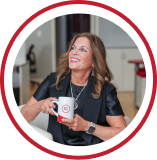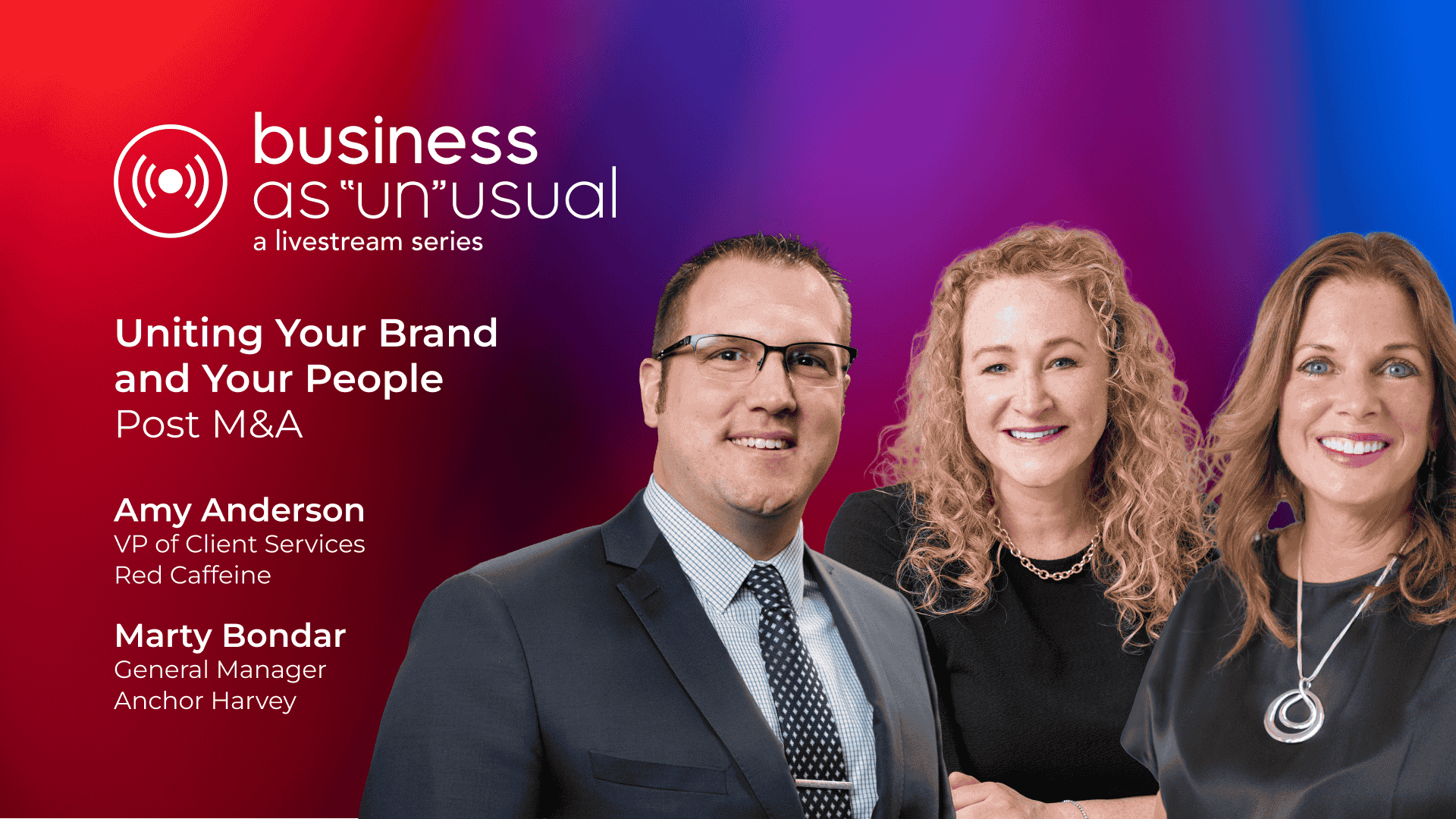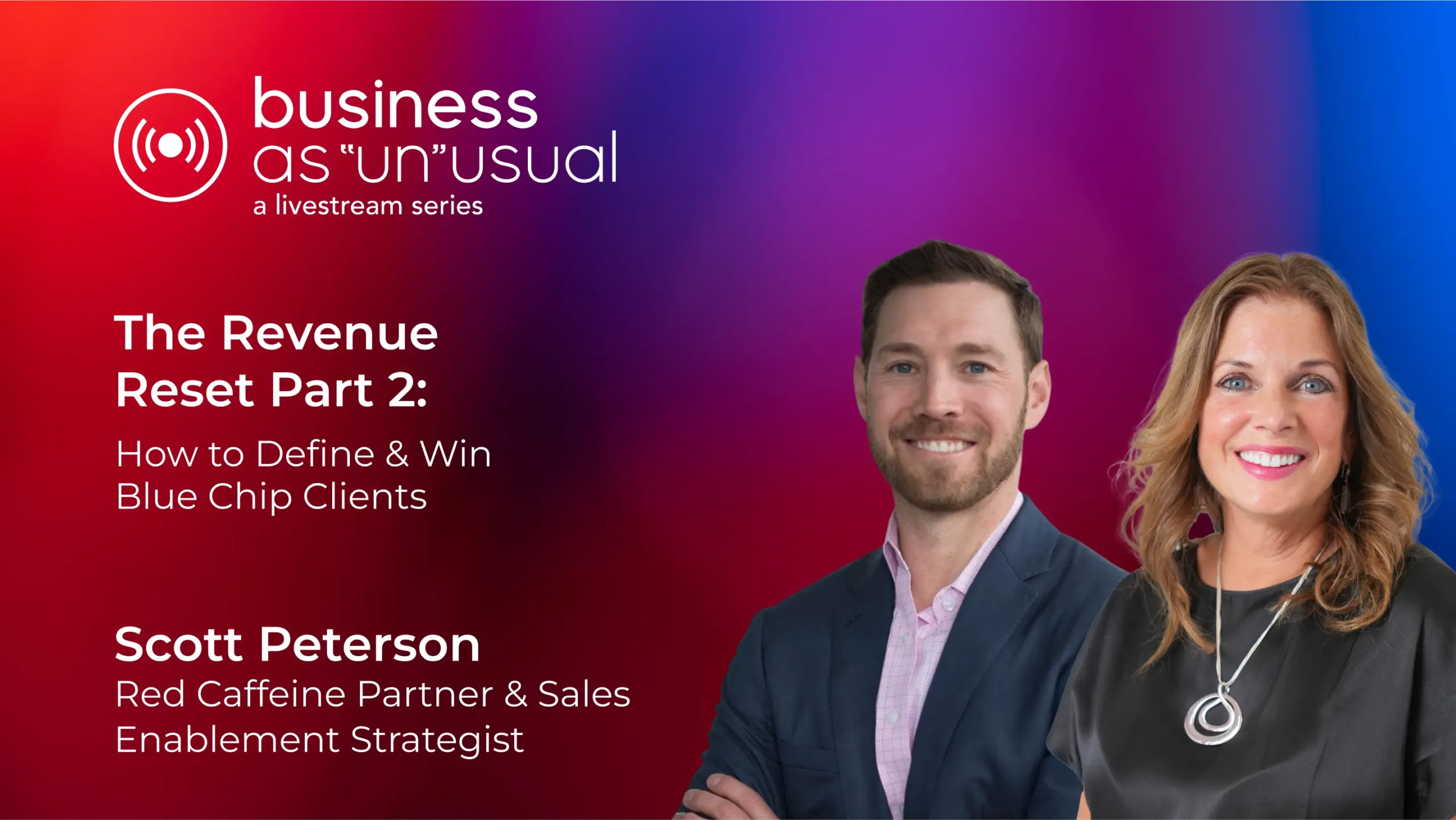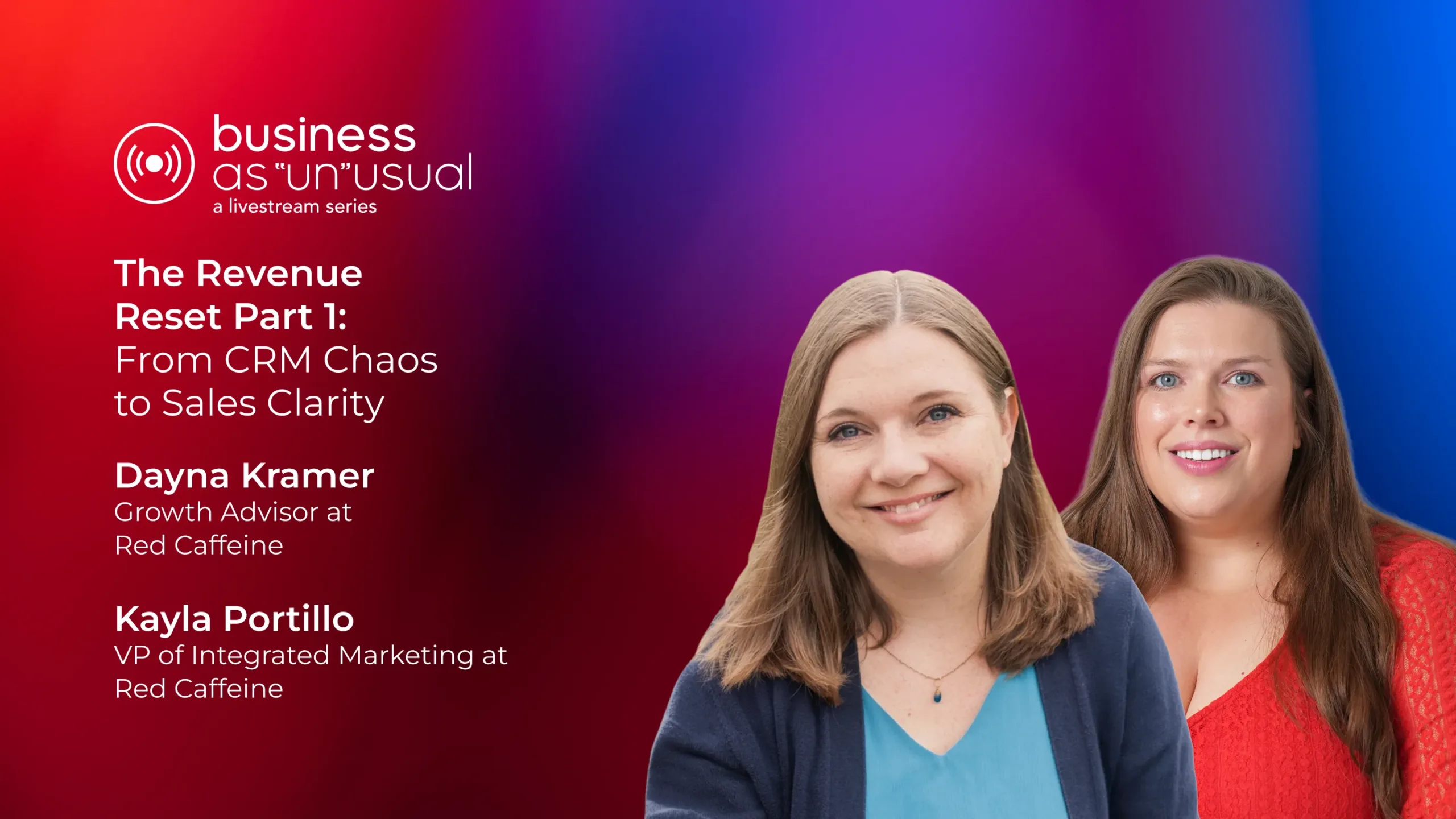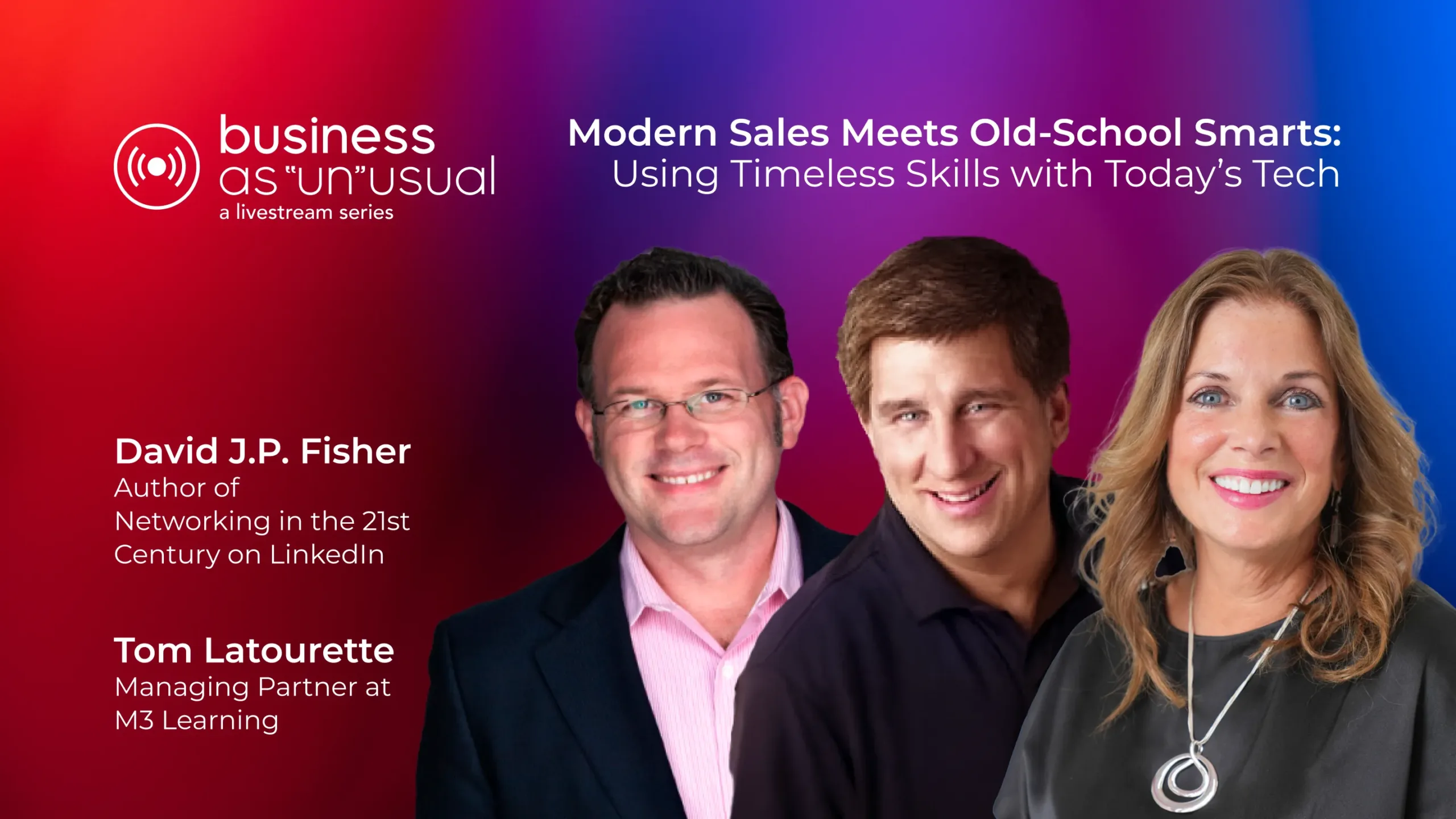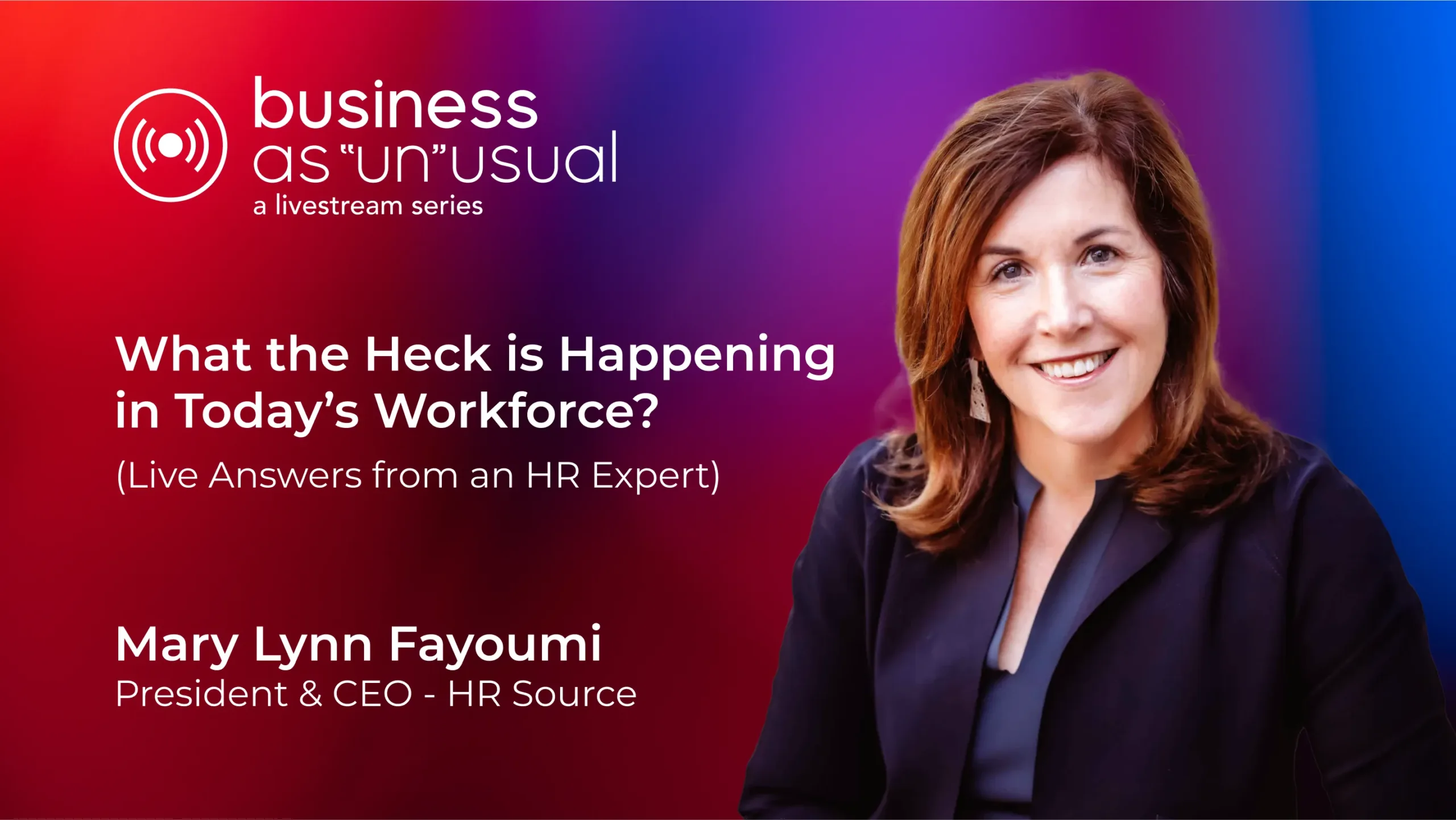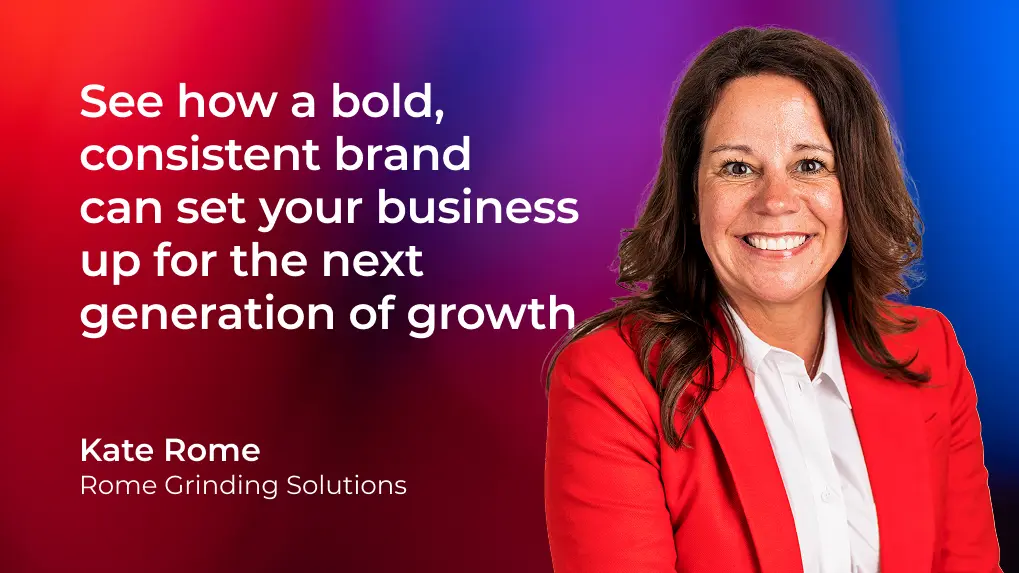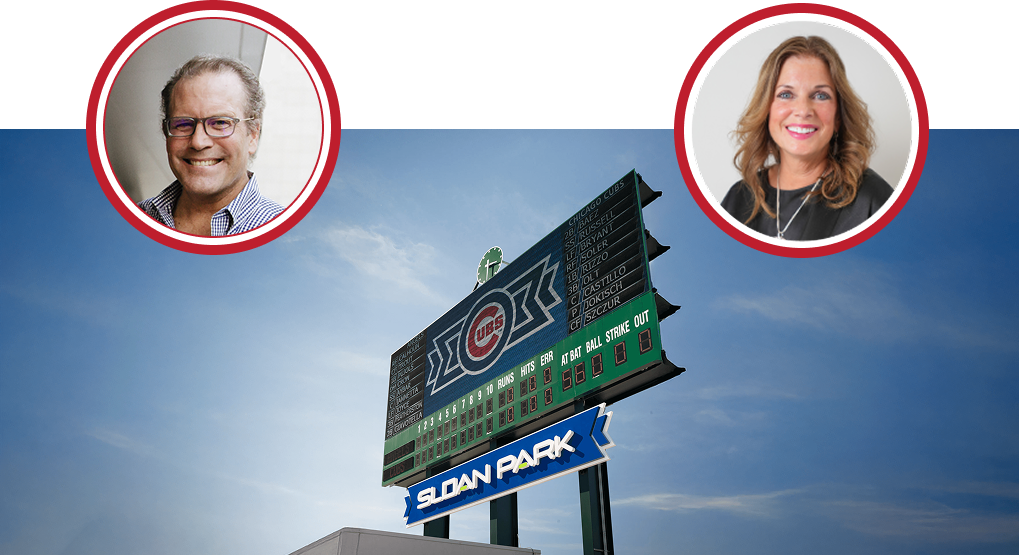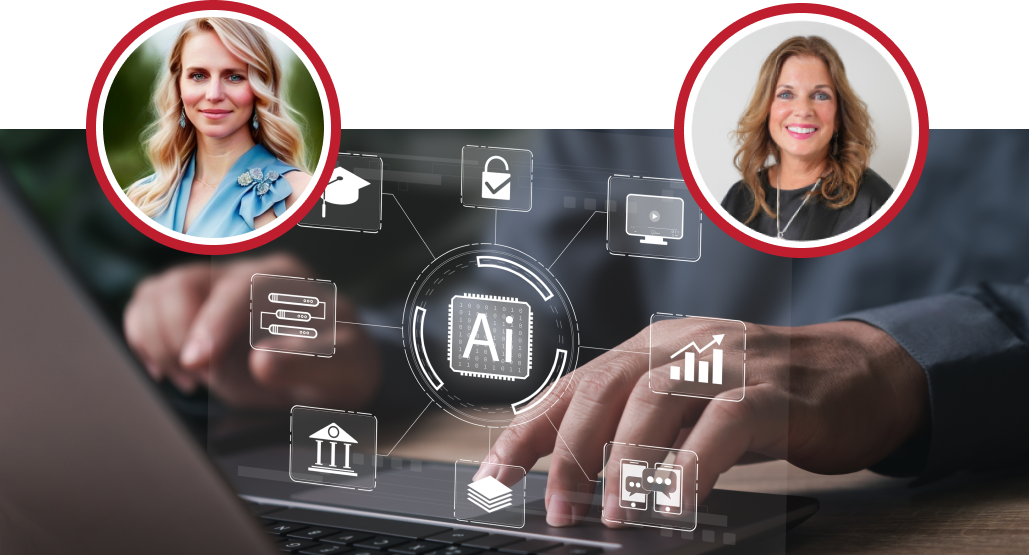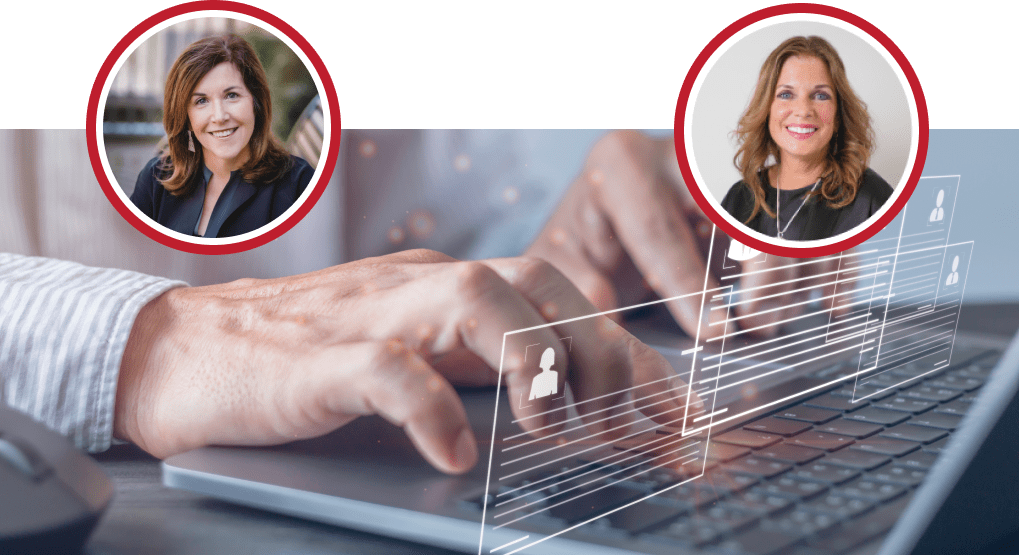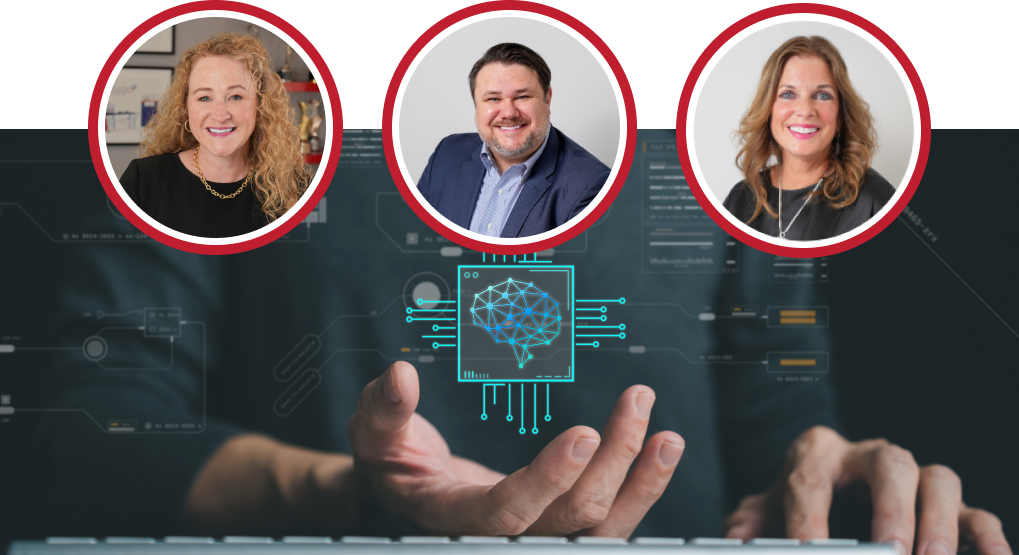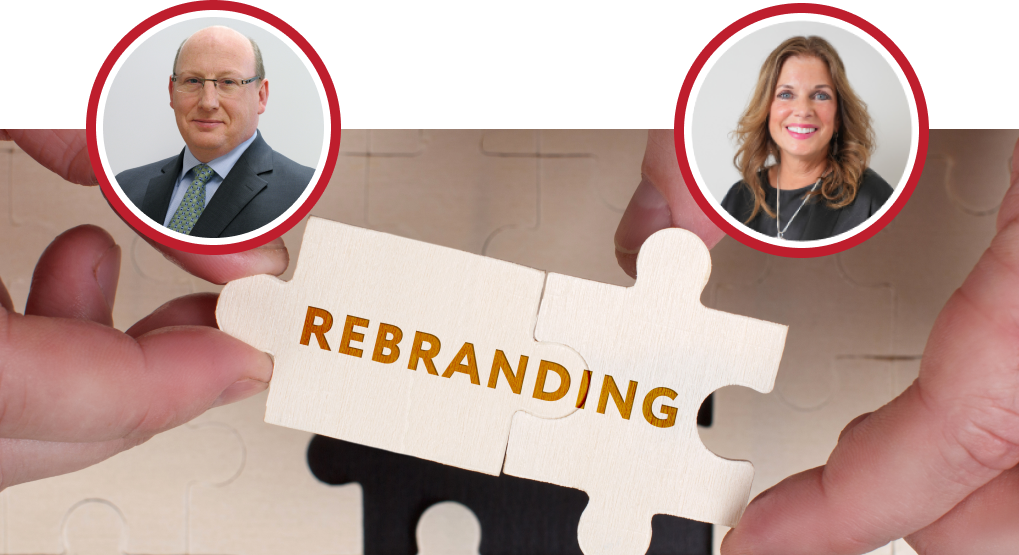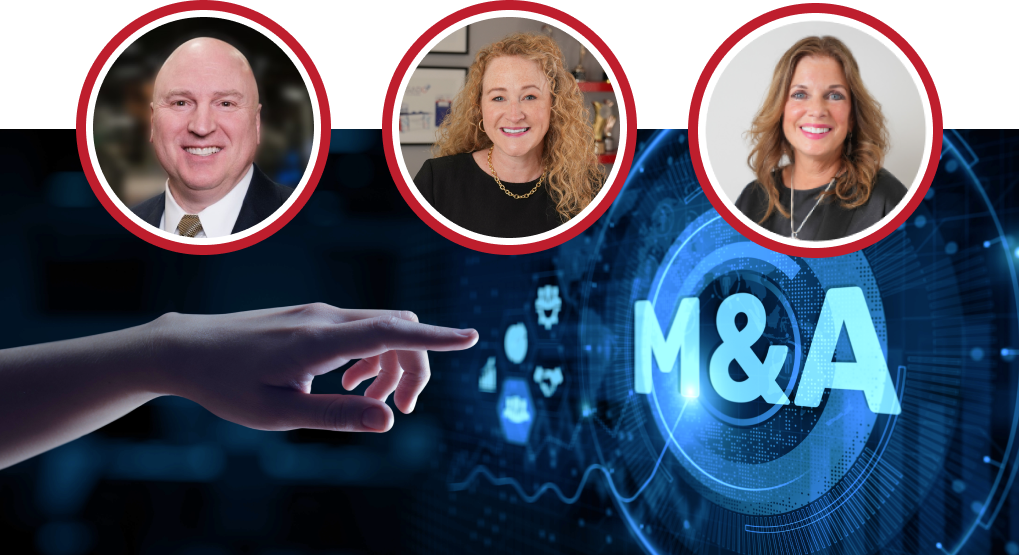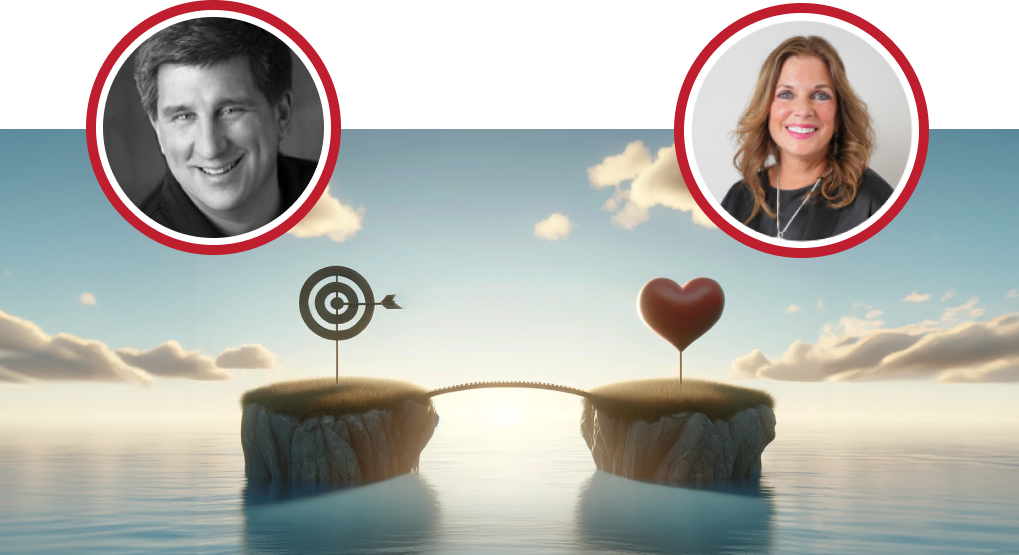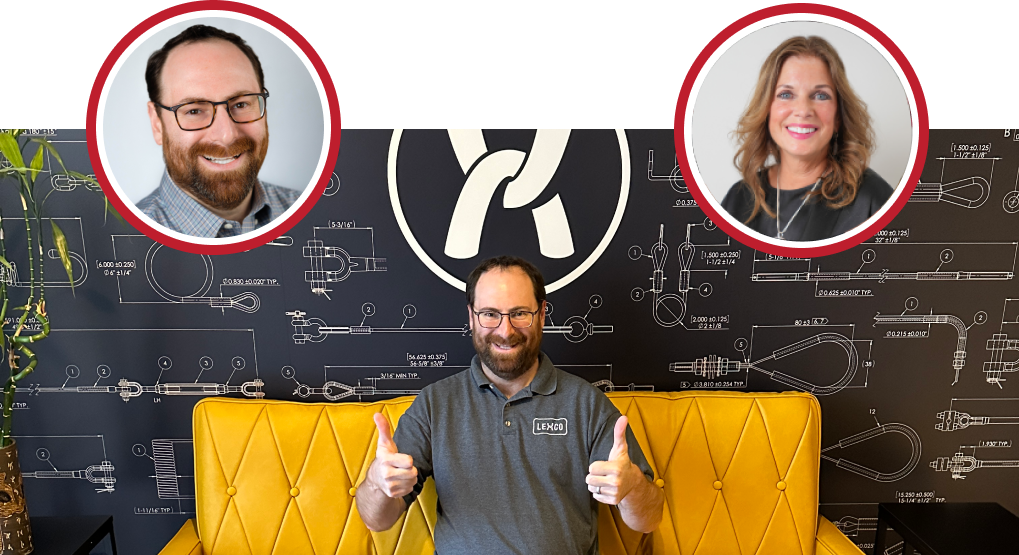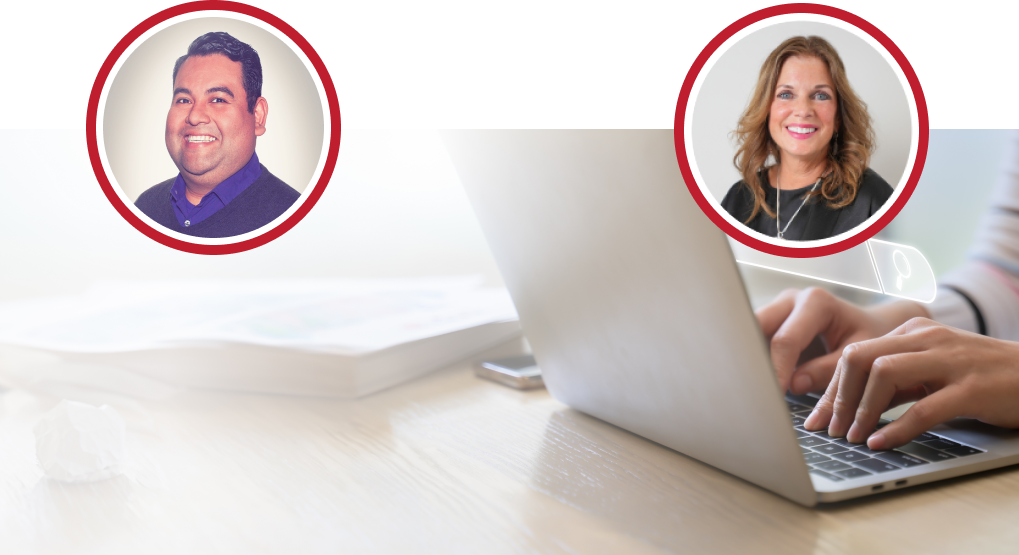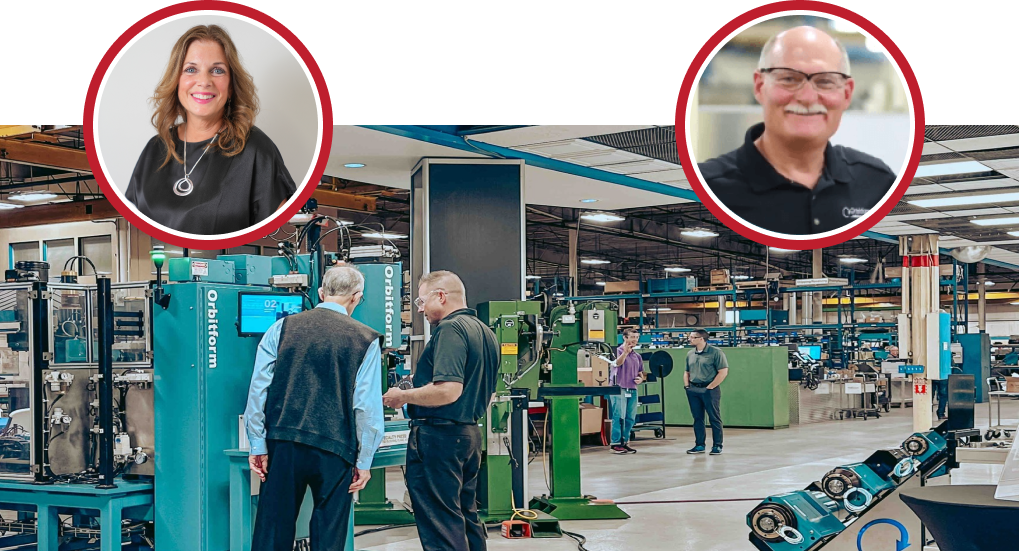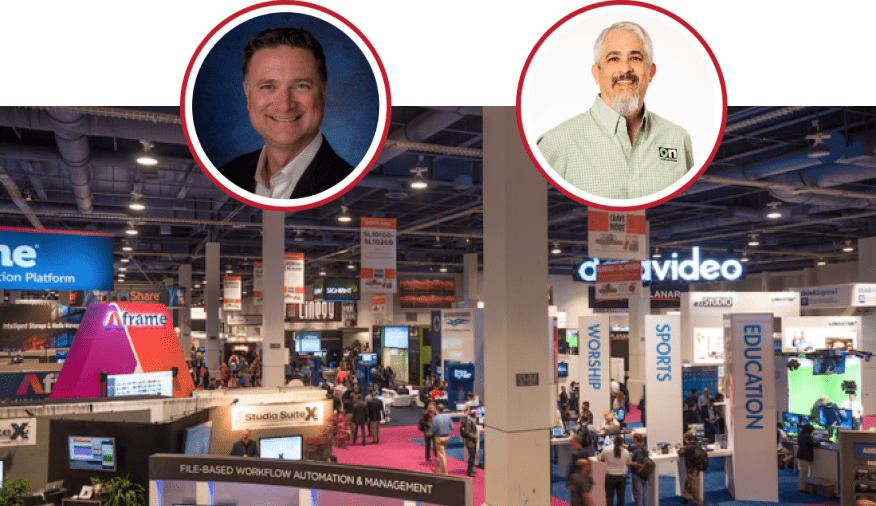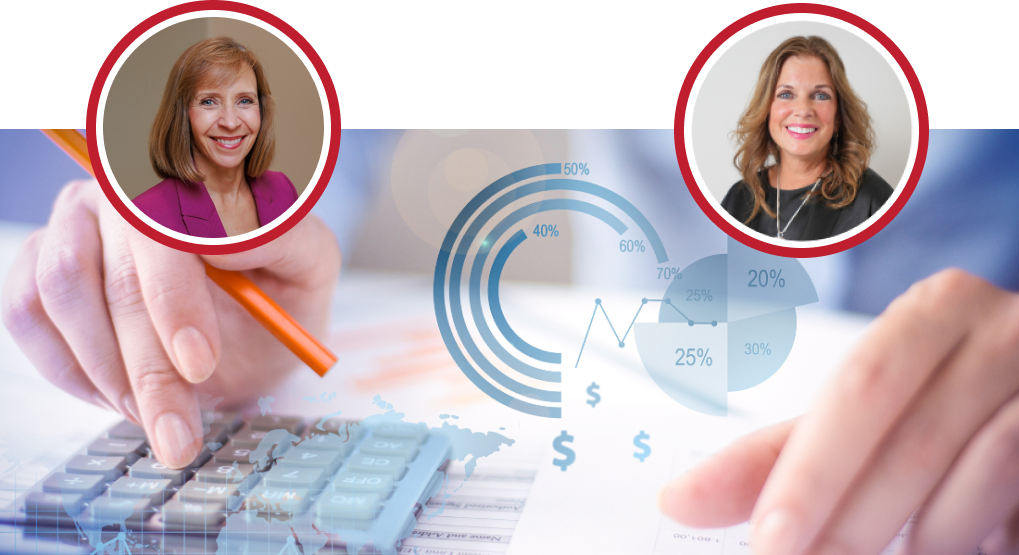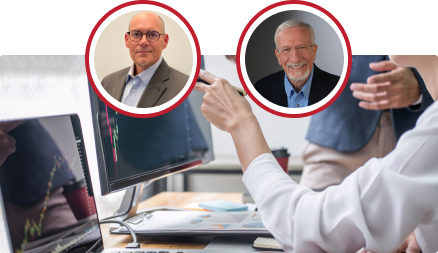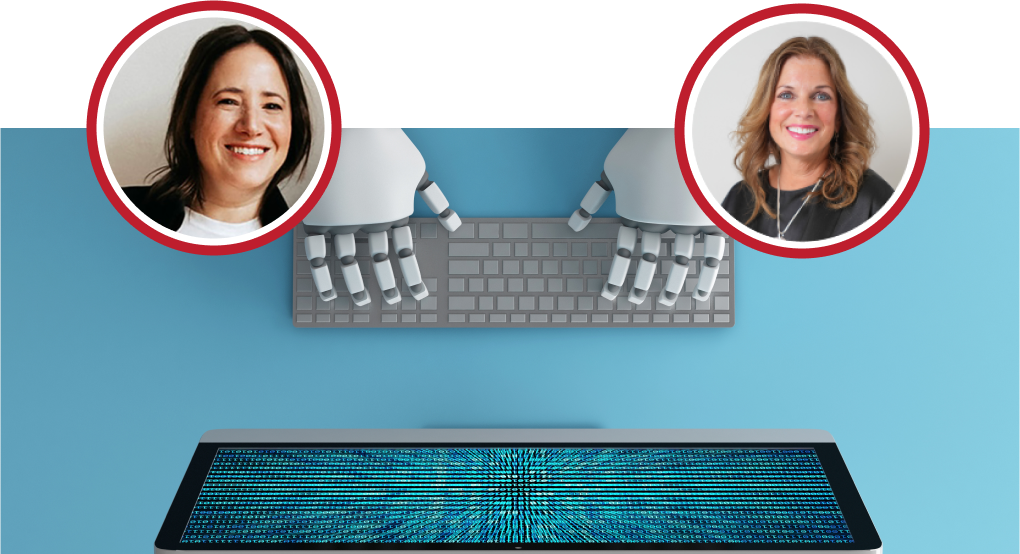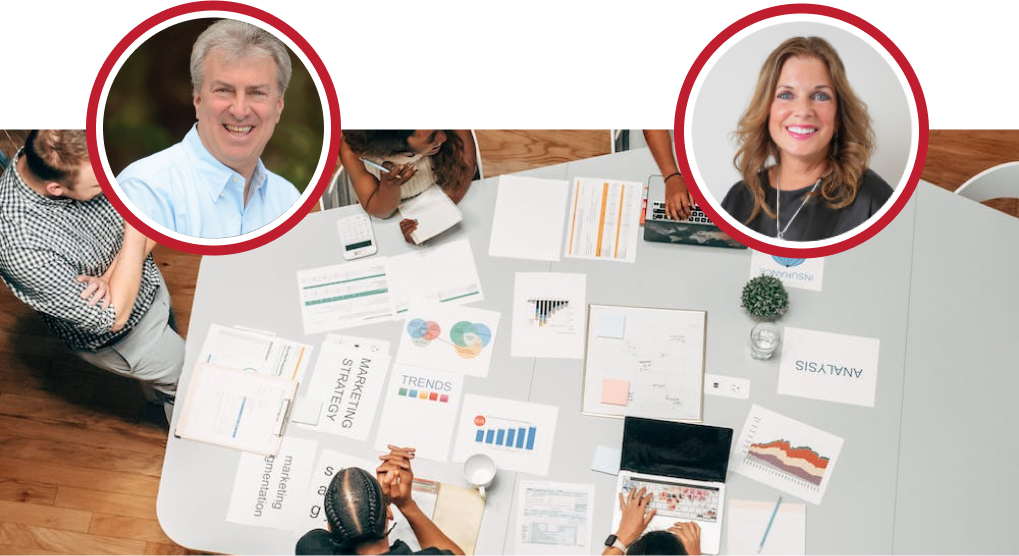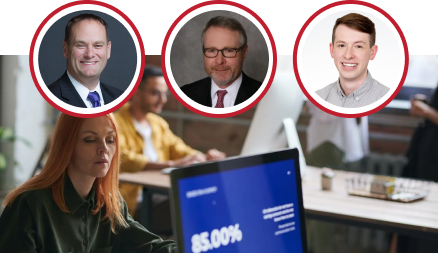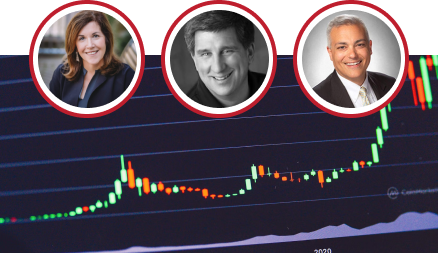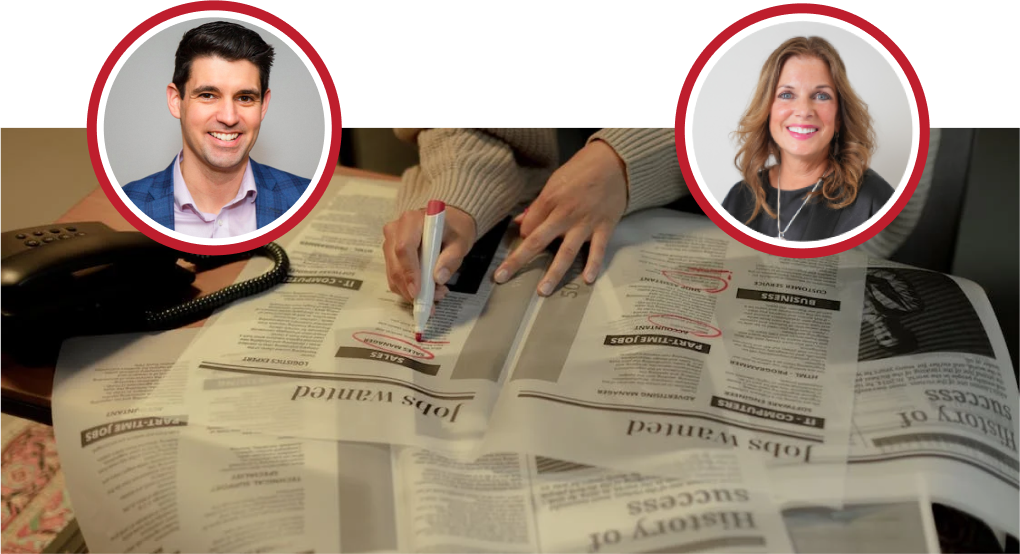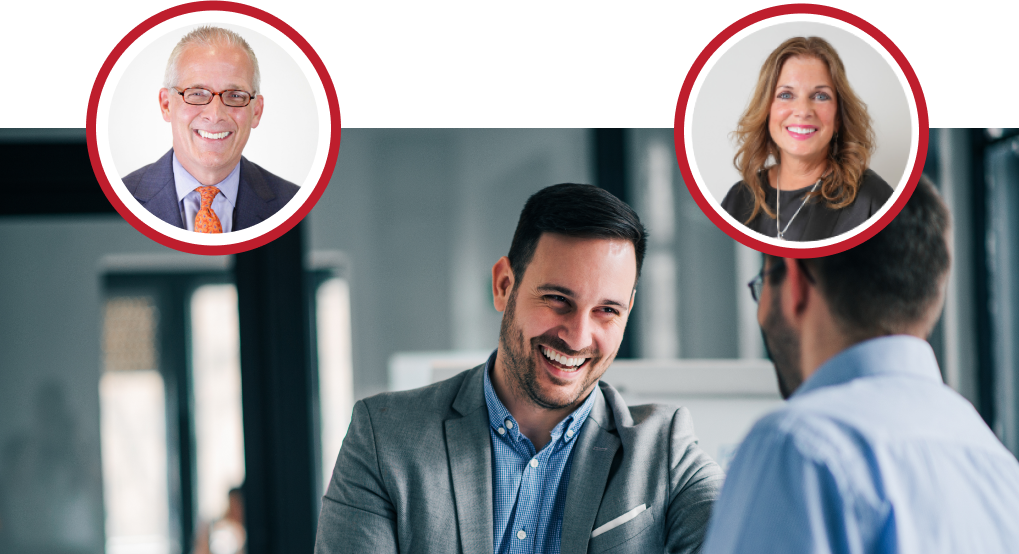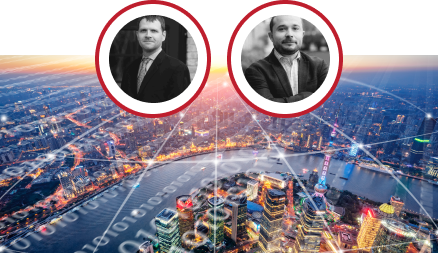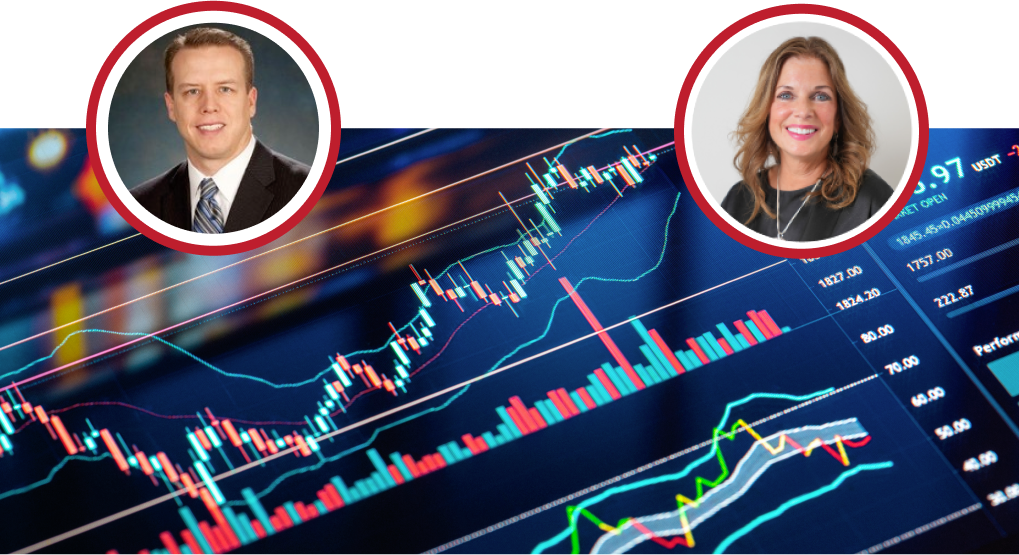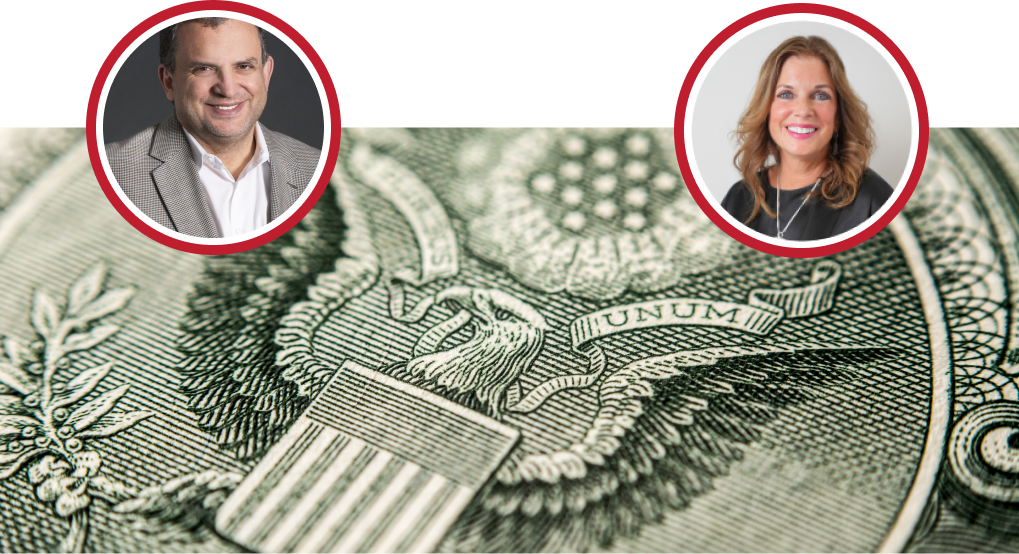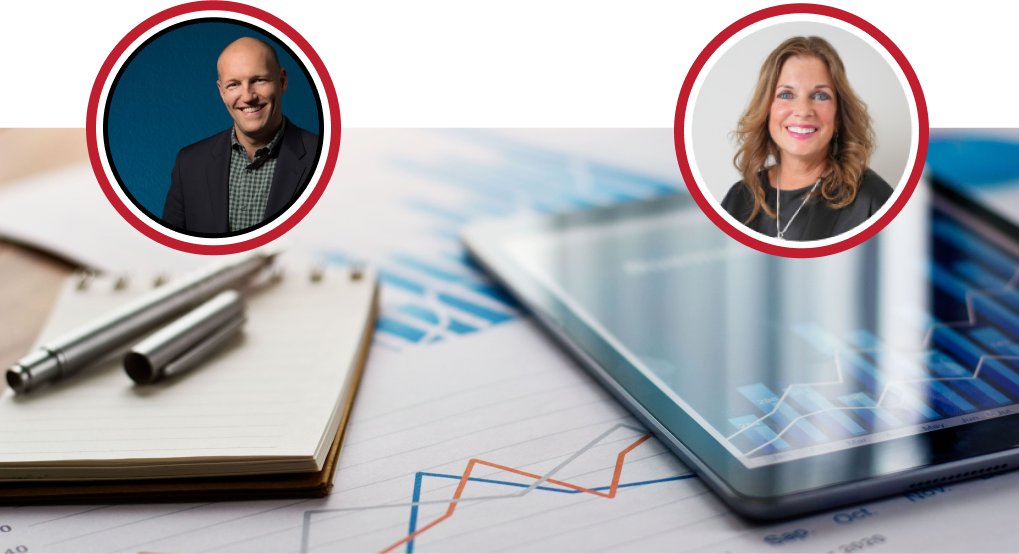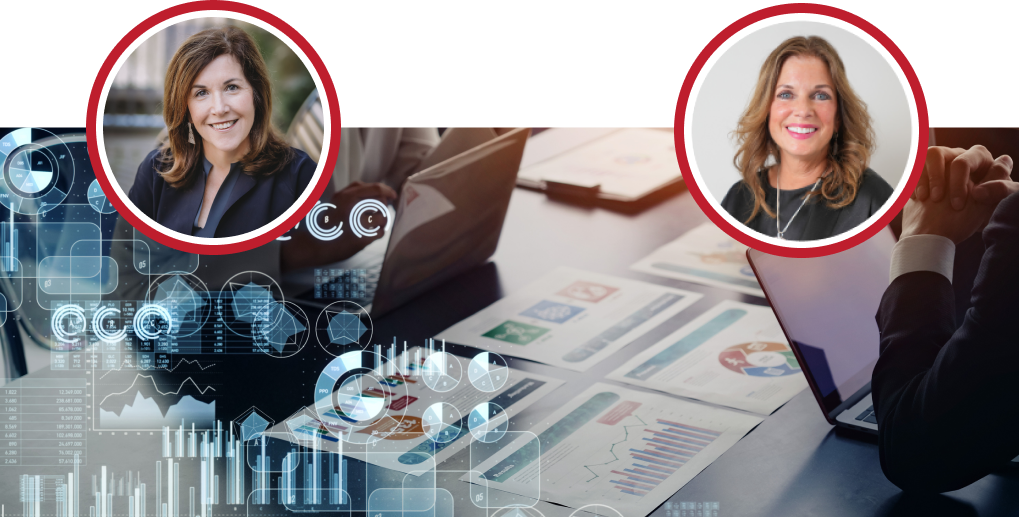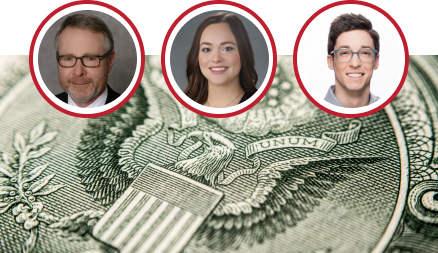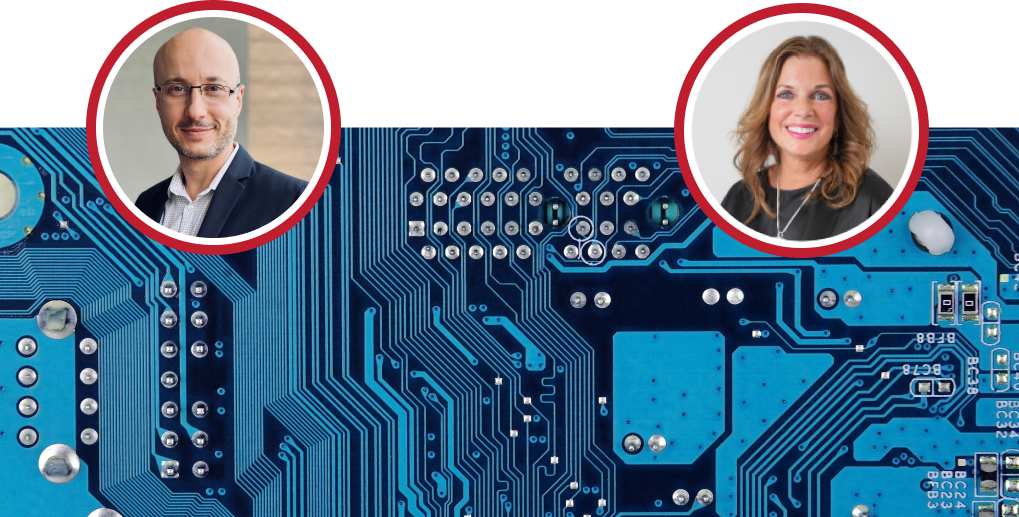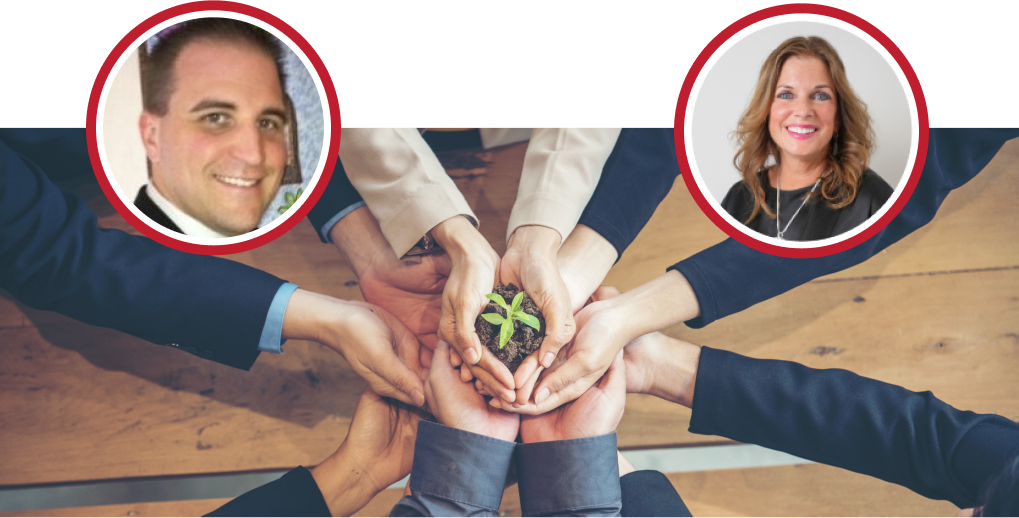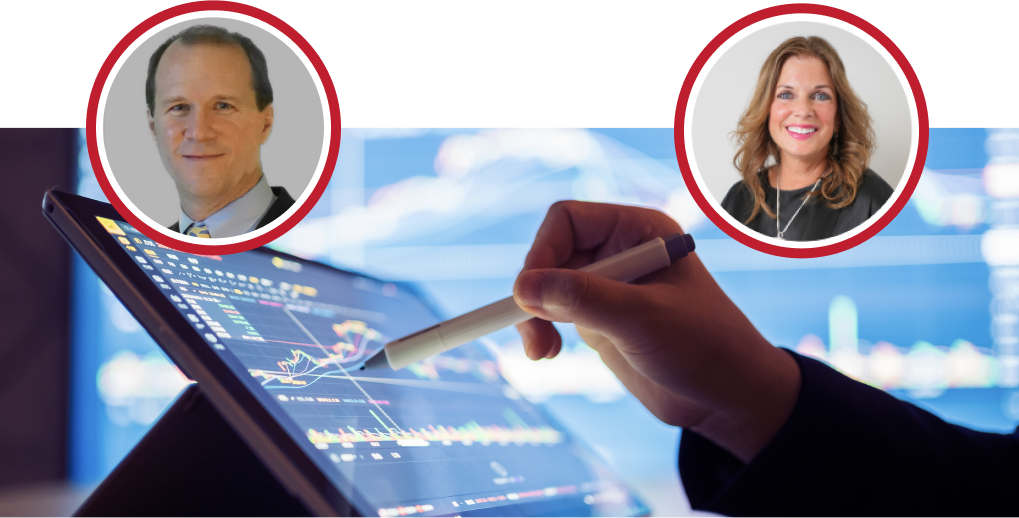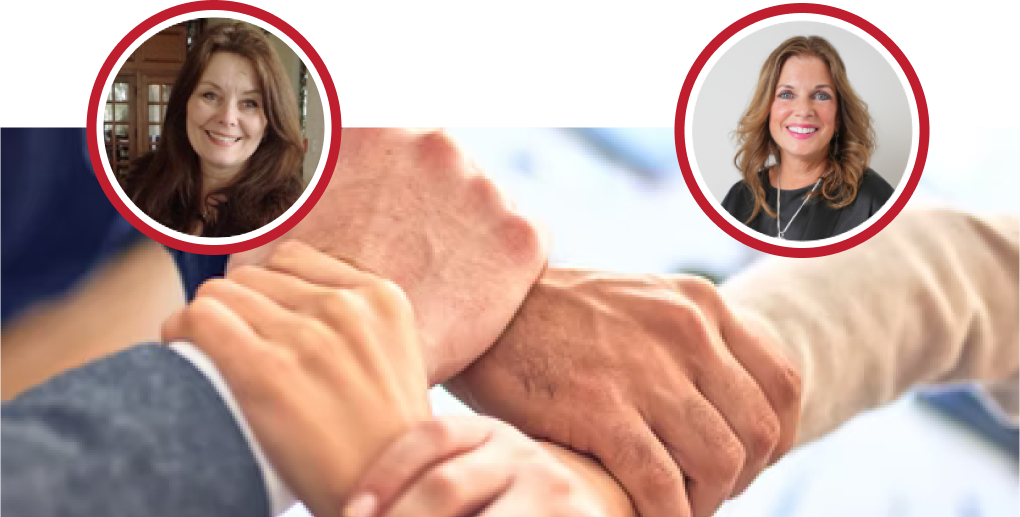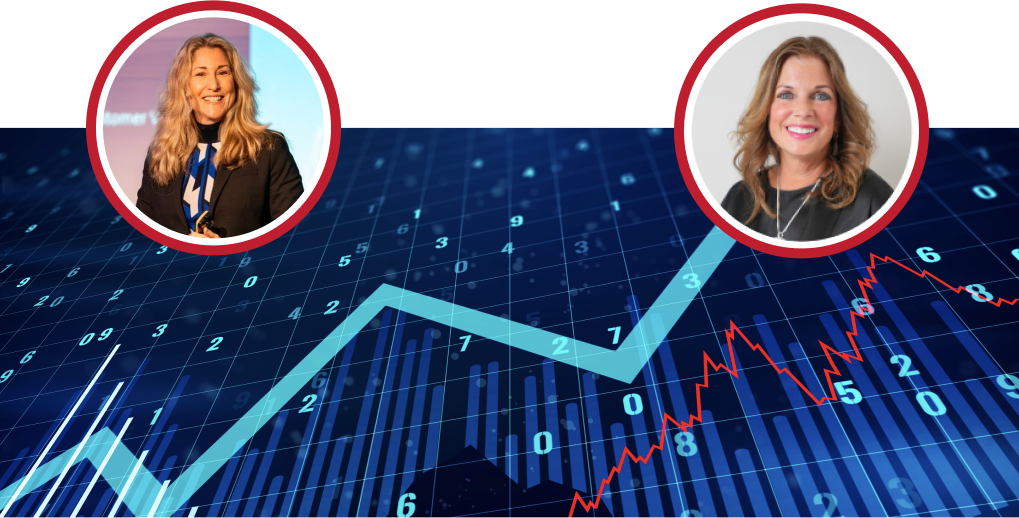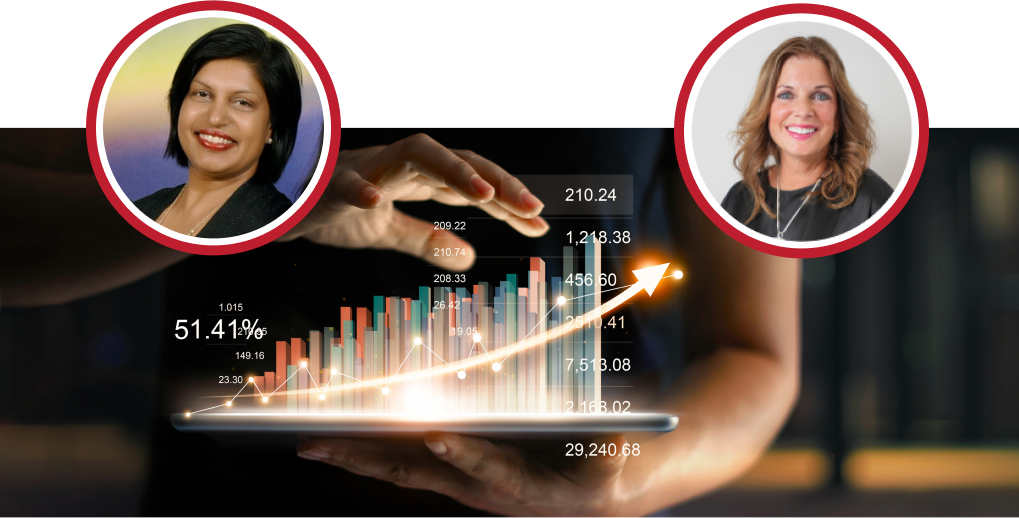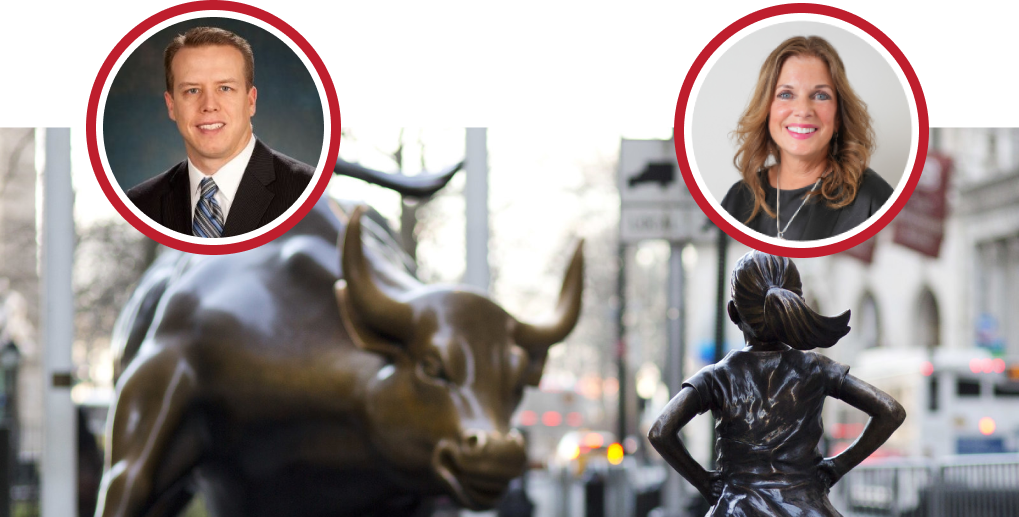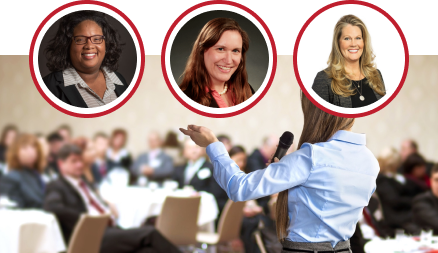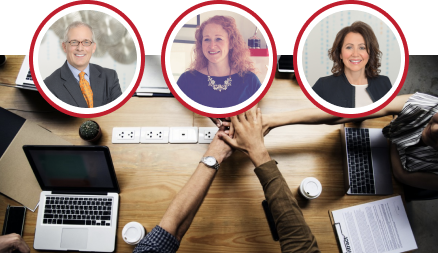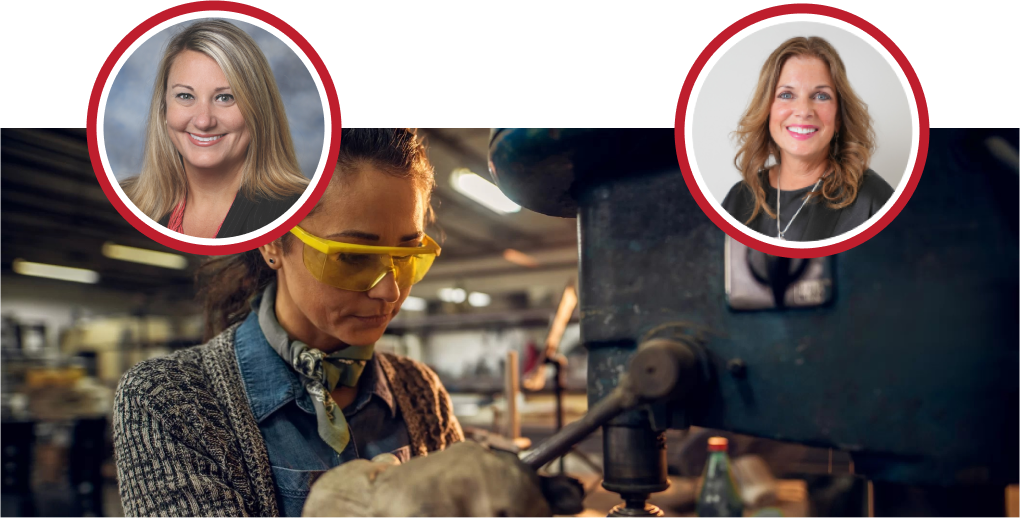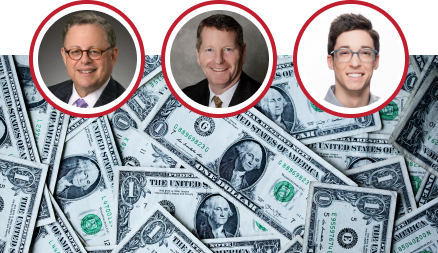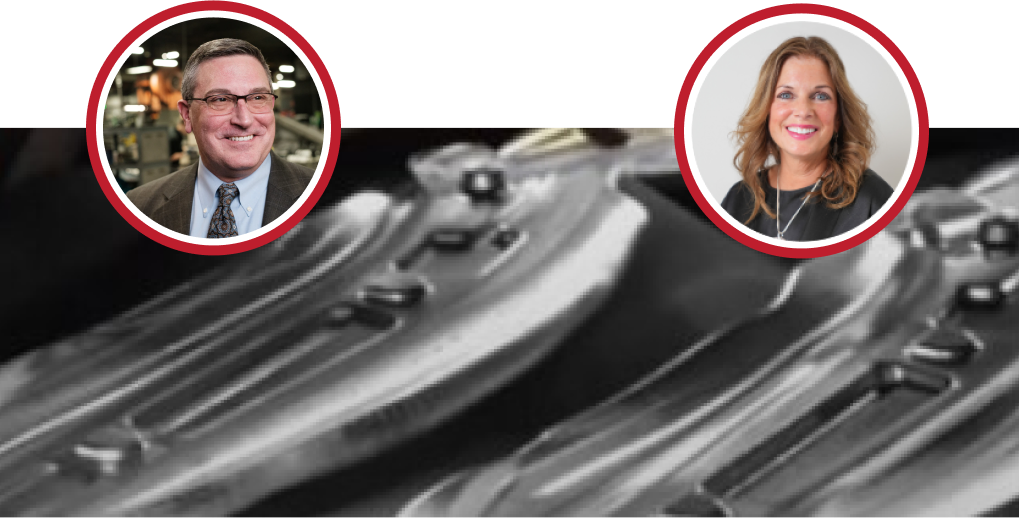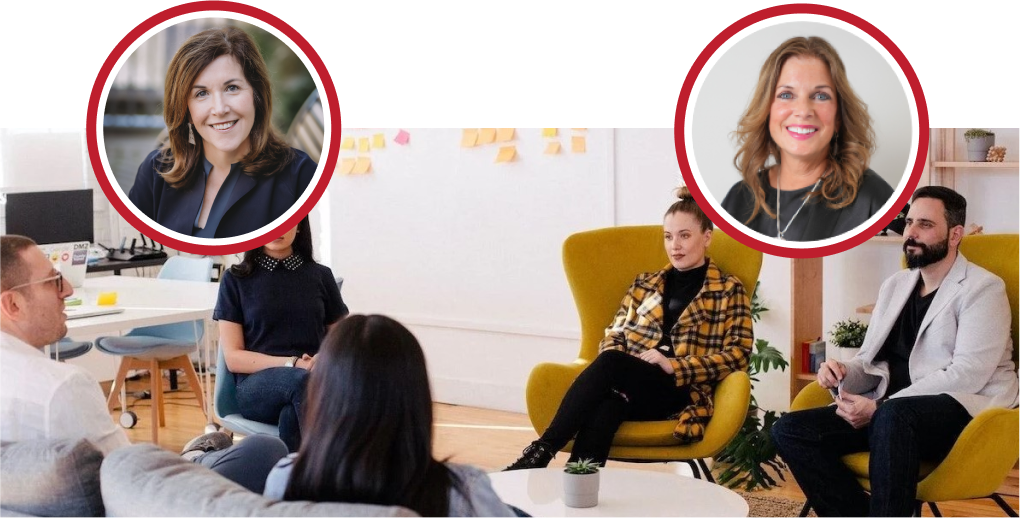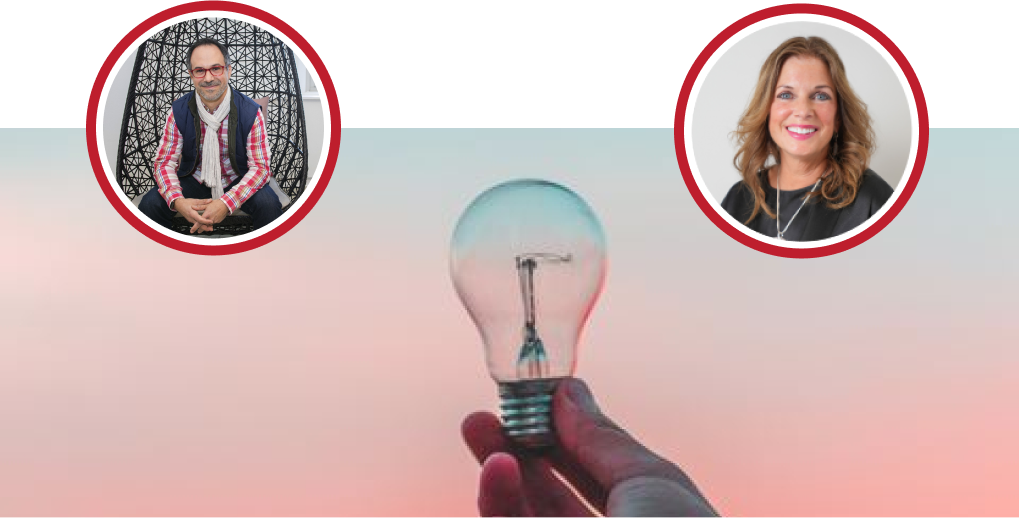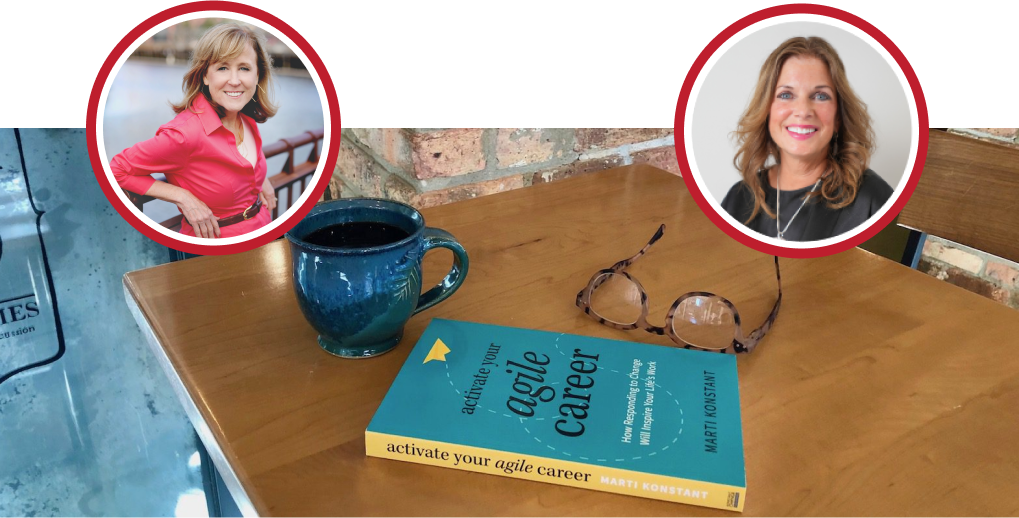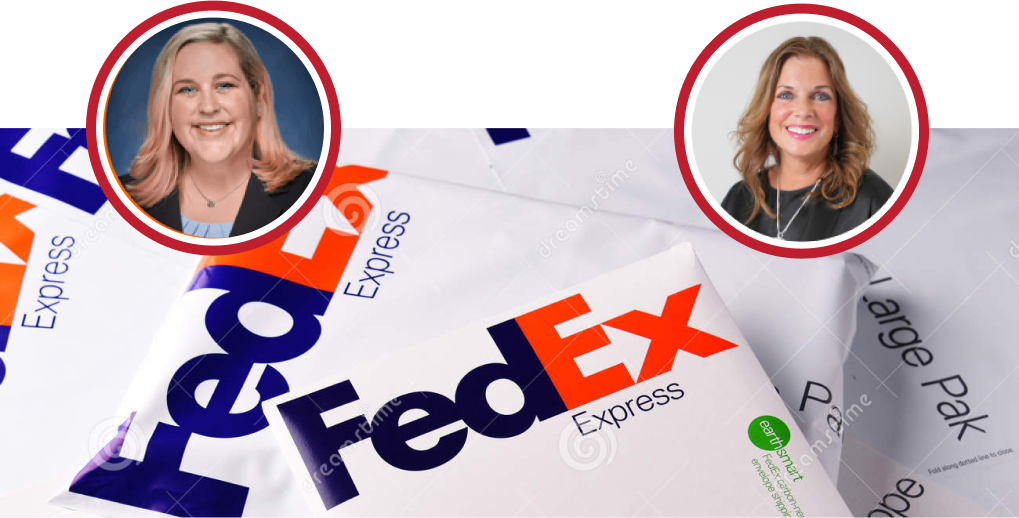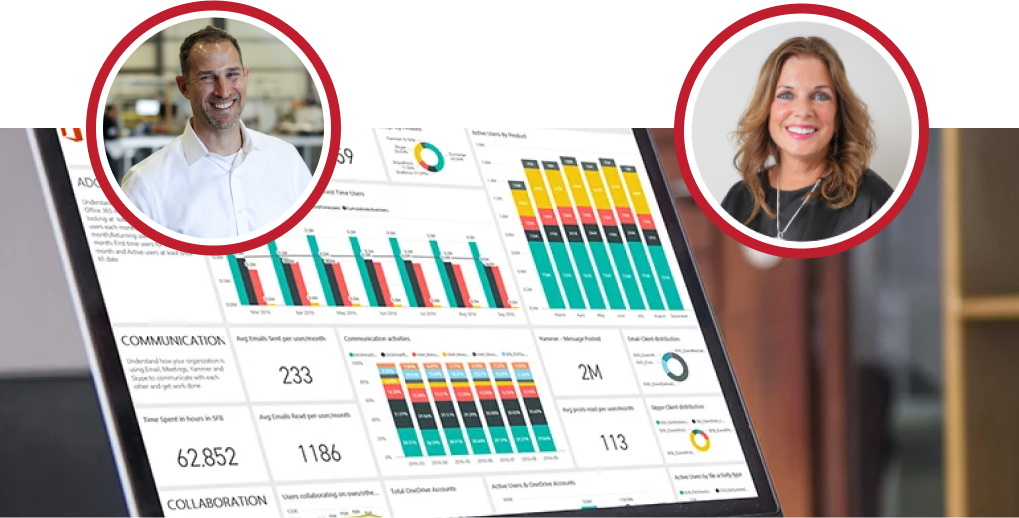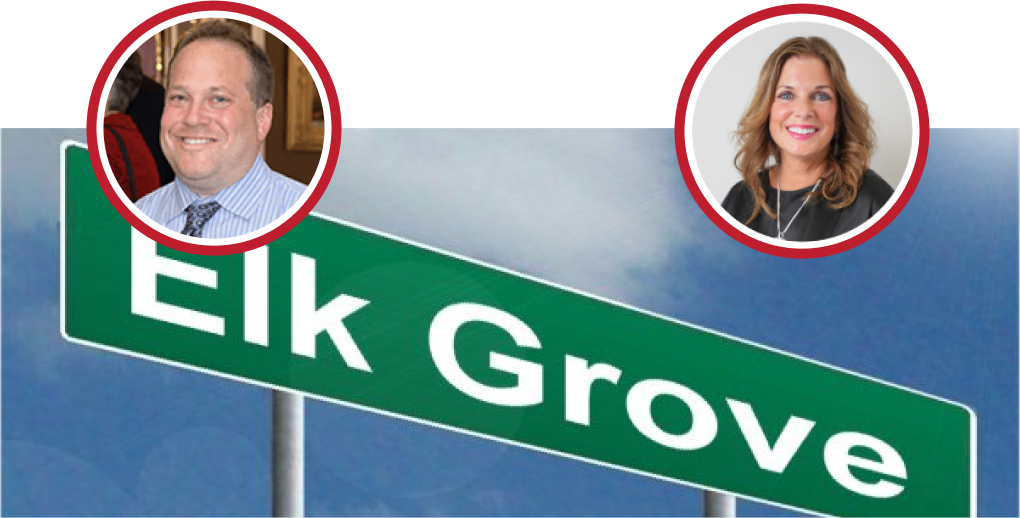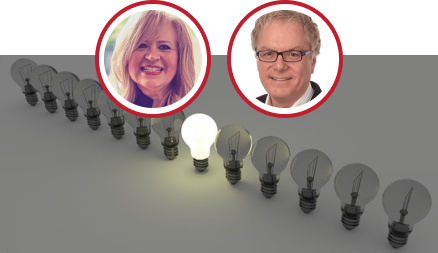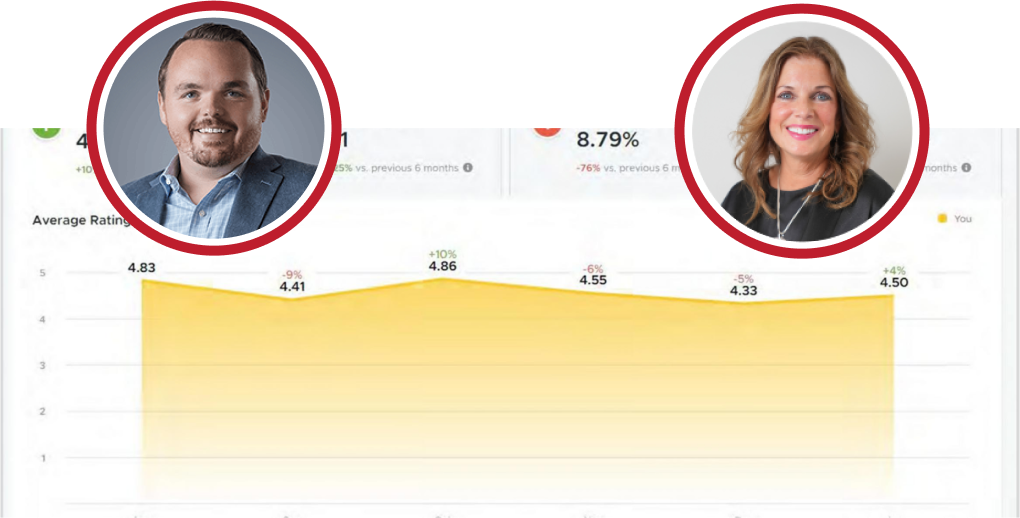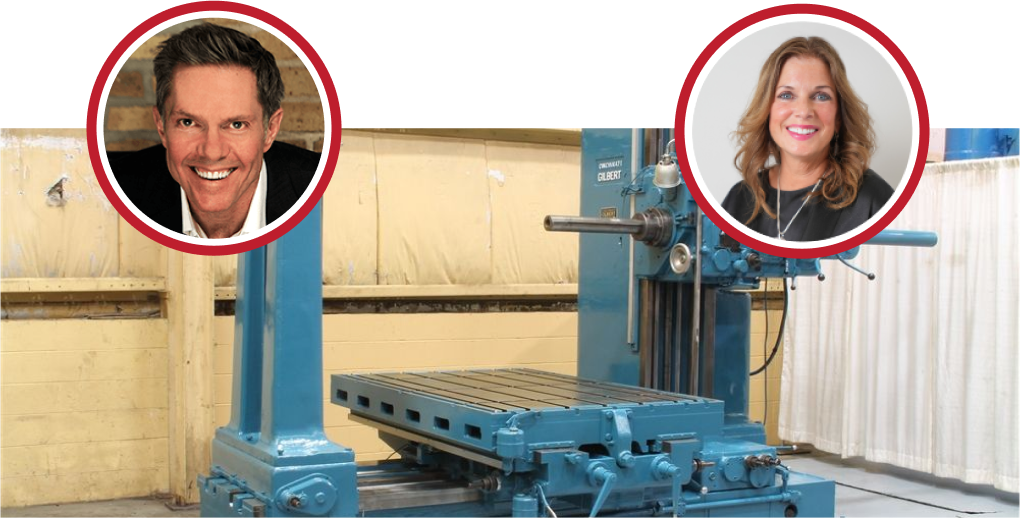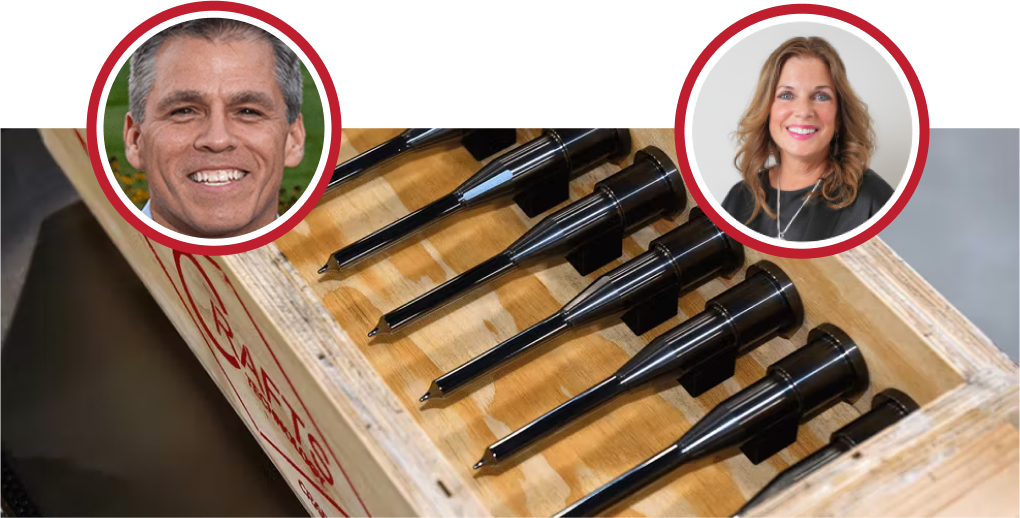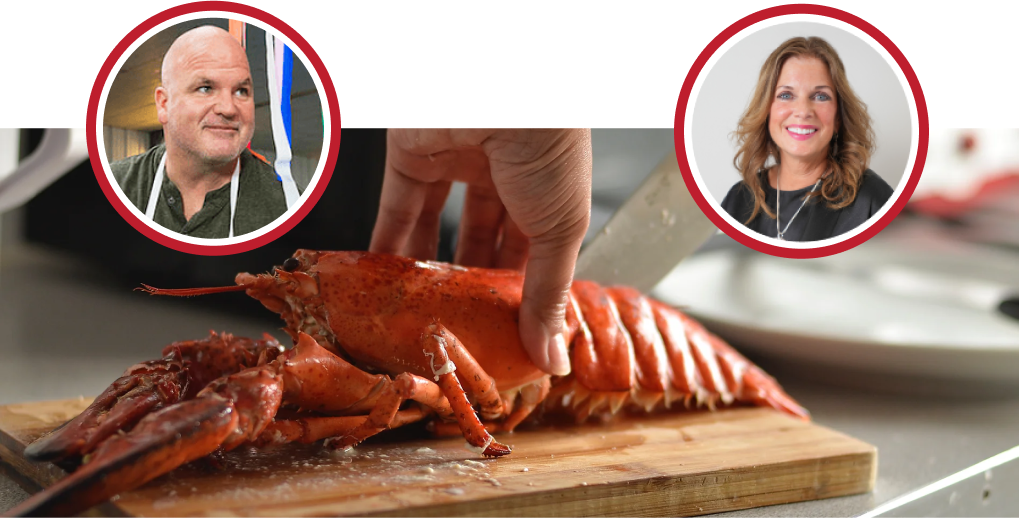Lisa: Good Morning. I want to introduce Kathy Steele, principal and owner of Red Caffeine, as well as Doug Farren from the National, excuse me, National Center for the Middle Market, so welcome Kathy, welcome Doug, and let’s take things away.
Kathy: Thanks, Lisa; Doug is really excited to have you on. We’ve been following your work for quite some time at Red Caffeine, so just could you give us a little bit first? Let’s tell us a little bit about you and your career and then talk a little bit about what the work that you do at the National Center for the Middle Market looks like?
Doug: Yeah, sure. Thanks, Kathy, and thanks again for having me as a guest excited to be here coming from snowy Columbus, Ohio. As you can tell by my background I’m not actually in our football stadium but it is blustery and cold here as well yeah just a little about myself so I’m a native Ohioan grew up just just north of Akron Ohio northeast Ohio I went to undergrad at Penn state university I studied business administration there I also played football for two years before I had a serious knee injury that forced me to hang up hanging up my cleats but I coached my last two years as a student assistant which was a great experience after graduation I moved back home and fortunately a family friend of mine had his own small consulting business doing six sigma quality implementations and at the time six sigma was something that originally came out of Motorola in the early 90s and a lot of the originators of that methodology had branched out and kind of started their own small consultancies so him and four other partners principals of this business were building their consulting practice and they had just brought aboard general electric as their biggest client so they were doing a lot of the black belt and master black belt training and there’s about 15 people in the company they needed somebody to kind of help with running the back end of the business so banking legal marketing communications setting up a website all those types of things so very early in my career I got to basically get my hands into all the facets of a very small business which was great and then eventually I was able to go through the training with one of our clients just outside of Chicago actually Navistar and received my black belt as well which was amazing we merged with another company called Qualtech out of Scottsdale Arizona I spent a year commuting back and forth between my home and Scottsdale and then decided I wanted to go back to school so went to fisher college of business at Ohio state for my MBA where I studied operations and logistics and then after graduation I went to work for a retailer here in Columbus called at the time it was called limited brands now called l brands which would mostly be known for Victoria’s secret and bath and body works it’s two larger brands so spent some time in logistics operations distribution center management my last role was actually in inventory planning doing some work for international so I helped I helped the bath and body works brand open up stores in the middle east turkey and the united kingdom and during that work I got a call from the head of career management at fisher who I kept in touch with since my student years who said that they had just signed an agreement coincidentally to launch a new center at the college that would study mid-sized companies and I had to be honest I had never heard of the middle market I didn’t know what that was again having started my career at a very small company and then having worked at a fortune 500 company so initially turned that down they were persistent and kept calling and eventually I made it down to campus for an informational interview with our dean at the time and once I was told kind of what this was going to be I was really intrigued and thought this might be kind of a once in a career opportunity once in a yeah once in a career opportunity and took the leap and have not looked back coming up on 10 years since we launched in 2011 so it’s been a great journey and I’ve really enjoyed learning about these companies have had a lot of fun just talking with a lot of CEOs and getting involved in research and working with a lot of great organizations around the country like yourselves who support mid-size companies so it’s been great
Kathy: That’s incredible. I love the depth of your career and the different experiences, so I want to ask a follow-on question about the middle market because I do feel like there’s a lot of there’s not a lot of clarity around what the middle market is, so, and it’s described differently by different entities so tell us a little bit about the impact, or what is what makes up the middle market.
Doug: Yeah, so I mean that’s that was really one of the issues we were trying to solve right because to your point there’s so many definitions out there there’s different revenue ranges you’ve got some organizations who look at head count so it’s wildly inconsistent and I give a lot of credit to ge capital is actually the the division that we worked with to launch the center as we were coming out of the financial crisis 2008 2009 they really wanted to understand who are these mid-sized companies it was a lot of their customer base what they found though was that there was very little information that was publicly available it’s not like you can Google tell me everything there is about the middle market there’s not really financial statements available a lot of these businesses are b2b so they kind of fly under the radar of the regular American consumer so there was a lot of discussion in debate I kind of joined the center right before we had our ribbon cutting so some of the initial kind of scoping work had been done in collaboration with some of our faculty member and the faculty folks and the ge capital team and eventually we landed on this revenue-based definition of 10 million to a billion dollars for a couple reasons one it’s fairly easy to remember and understand two that is essentially the middle third of the U.S. economy we kind of took it and said let’s if we were to just cut it into thirds where would be that floor and ceiling and those were kind of the closest boundaries from a small business standpoint it makes a lot of sense as well because the small business administration depending on industry that advocacy tends to stop somewhere between the seven eight nine million dollar revenue range so we kind of felt like okay once you’ve graduated out of that sba kind of advocacy then you’ve entered the middle market and then at the top end a billion dollar company for all intents and purposes is going to have layers of management and could be multinational and so forth so we just felt like that made a lot of sense it does present some challenges because we know that a 30 40 million dollar company is going to tend to act and behave like a small business particularly when you try to compare it against a 700 or 800 million dollar company the fact that we both call them middle market has meant that in a lot of our research work we’ve had to create sub segments so we have typically what’s in the 10 to 50 million range we call lower middle market 50 to 100 million is core middle market and then 100 million and above is the upper middle market and they all have that kind of their own general characteristics and distinguishing factors but a bulk of the 200 000 or so companies that fall between that 10 million to a billion range actually reside in that 10 to 50. so again, it’s a third of private-sector GDP in employment in us. We felt like it was an area that had been understudied and ignored and underserved, and hence that’s become the mission of the center is to create ongoing thought leadership networks resources programs that can continue to help the growth of these companies.
Kathy: Yeah, I mean, I think we, if we share that same kind of thinking and that opportunity in the mid-market and also, was really floored when I really loved learned about how much this segment the drives our economy and how many people employ and it’s really astounding, so I love that there’s the focus there we see the opportunity as well, and you talked we talked a little bit about in the marketing of this event recovery and would this be the sector that drives us again before we get into the report this is the sector that drove the economy through recovery in the last resection, so it is, can you just speak to that impact a little as well?
Doug: Yeah, it’s been one of the interesting things that we’ve continued to track since we launched in 2011. I mean obviously the to your point the data suggested that over the course of the the last financial crisis again the period 2007 to 2009 if we just look at employment for example big businesses were shedding over three million jobs the middle market actually added over two million jobs so you think about the hit could have been much worse if not for middle market companies who generally we’ve come to understand they they take longer views they’re not under the pressure necessarily of being a publicly listed company because almost 90 of them are privately held whether they’re family-owned businesses or they might have private equity investments or they might be partnerships but a lot of them are private and they do that for a reason it’s because they can take kind of a longer-term view of their growth of their investments of their strategy and we talk to a lot of businesses right when we right when we started actually who said yeah this was a great opportunity us to add a lot of great talent people who had gotten let go from bigger companies and they could add to our capability so the other thing we’ve learned these companies have been in business on average again this is across tons of different industries and size companies and geographies in the us over 32 years is about the average length of time so obviously you’ve got some younger businesses you’ve got some gosh I know we’ve even come across some hundred year old middle market businesses but the jobs that they create there are they’re highly sustainable jobs and as you’ll see here in a moment with some of the data that I share their revenue growth has been very consistent and it a lot of times it outpaces large and small so yeah we the the middle market indicator which I’m going to share today it’s kind of our bread and butter and it’s a way for us to track kind of how these companies are performing and I and I’m happy to go into that in a little bit more detail.
Kathy: Yeah, let’s dive in and give us a little bit of a storyline around how you do the research, how frequently it’s released as we start to get into it?
Doug: Yeah, it’s, so, we some of our activities at the center and you kind of think of what we do in kind of three big buckets I guess one would be research the second would be outreach and engagement so we have a lot of partnerships around the country I was just telling somebody earlier this week on a call that pre-pandemic I was probably on the road 40 to 50 days a year giving presentations in different parts of the country and literally coast to coast that’s why we felt it was important to call it the National Center for the Middle Market and I think a lot of people in our early year or two thought that we just focused on Ohio or just focused on the Midwest but so research outreach engagement and the third bucket is education I didn’t mention in my background that we’ve also launched a class at Ohio state for our undergraduates on the middle market we believe it’s the only one of its kind in the U.S. where they get to hear from CEOs c-suite executive speakers who come in and talk about their businesses and then they work on team projects in groups with actual middle market companies so that’s been a lot of fun to teach a lot of fun to advise the students and it’s opened a lot of their eyes as well so if we go back to the research component the middle market indicator was established really to give us that ability to monitor the performance of the middle market it’d be one thing to do an annual survey or just check in every couple of years but we felt like we really wanted to authoritatively talk about different issues measuring things that impact these companies and then occasionally throwing in kind of new topics that are relevant or newsworthy so we launched this in the first quarter of 2012. for the first nine years it was a quarterly survey this past year we actually kind of backed off of that because over time we noticed that the numbers really didn’t change too drastically over the course of three months and that actually checking in at six-month intervals might be a little bit more effective so now it’s a semi-annual survey but we work with a third-party company a group called RTL research out of Stanford Connecticut they help us basically design the survey they to help with the management aspects of that but as you mentioned earlier we go out to a 1 000 c-suite financial decision makers at mid-size companies we weight those results against the U.S. census so the reason we do that is we want to make sure that every time we do this survey that the results and the data accurately reflect the makeup of the middle market so in other words we wait on three criteria and those are industry makeup size and geography and then we kind of like I said publish kind of the ongoing data which is revenue growth employment growth confidence in the economy key challenges to growth and then investment planning and then we’ve got some additional topics as well so I think we’re going to dive into some of these yeah in a little bit more detail and if you want I can just keep going and kind of start talking through some of these so starting with revenue so yeah let’s look at so this this this data was collected in December so the survey the the fourth quarter survey as we call it went out shortly after thanksgiving we collected the thousand responses throughout the first almost four weeks I think right around Christmas we wrapped up the sampling so you have to imagine these companies as we talk about some of the other topics it’ll be interesting because this was before the announcement that vaccines were approved by the FDA and started rolling out so you’ll see that maybe reflected in some of the confidence numbers but it’s basically we asked questions where we look back over the prior 12 months and then we also have some forecasts to look forward to 2021 so we’ll talk a little bit about those this first chart here is the are the results for 2020. you can see that for the for the year revenue growth obviously took a big hit I mean I don’t think there’s any big surprise here given everything that happened with the pandemic minus 1.2 percent prior to our summer survey in July we had never seen a negative growth rate you can see by this trend line here the red line or all of the previous data points for revenue growth and historically it’s averaged almost six and a half percent we also compare this to the s p 500 because we want to say what what’s that growth rate versus large companies we don’t really have that metric for small businesses unfortunately so we use s p for large as a comparison and as you can see s p took a bigger head at minus five and a half percent for the year and consistently since we’ve been measuring the the middle market growth rate has outpaced large businesses so that’s kind of the story we’re going to be really curious to see what happens in our next survey which will go out in June for the for the first half of 2021 but I’ll talk a little bit about the forecast here in a second so if you click to the next slide so yeah this is the forecast so again we asked these executives okay tell us what your next 12 months looks like you can see that the projection is actually pretty optimistic we’re happy to see this number traditionally what we’ve seen are these these executives tend to be very conservative so in almost every quarter or semi-annual survey when we’ve asked the projection the actual results have always beat the projection that dip you see was from the summer again not too optimistic that was a little over like it looks like just under 2 I think was the projection in the summer now it’s up to 4.1 it’s still a little bit below that historic average of about four and a half percent or so but we are glad to see that so I don’t want to say that the tide has turned but there’s definitely some cautious optimism out there as we think about revenue.
Kathy: Yeah, well, we tend to call it forecasting, and, because it is, we don’t like to go out on a limb and forecast way above what we think we’re going to hit. That’s all I agree; it was a little bit conservative, so you want to go on to?
Doug: Yeah, let’s take a look at employment because this is this is probably where we get the most questions everyone’s always interested about the employment numbers so if you go to the 2020 data if you click the next let’s see we should have yeah there we go so yeah kind of a similar story here right I mean if you this is a lot of data I mean I mean the big news here is that again no surprise employment is down on average again this is across the thousand companies 2.2 percent I should mention we look at this by sectors as well so we there’s nine different industries that we track if and if there’s particular interest if somebody wants to reach me after the the talk today I’d be happy to share some of that data we also have it on our website but it there’s big differences right across retail construction took bigger hits and then you saw places like business services and healthcare actually positive both in the revenue growth and employment growth surprisingly but you can see the trend here very similar story historically the middle market average revenue growth has been just about five four and a half percent over the course of time big hit in 2020 way down in the summer starting to bounce back up and again the two trend lines we have below the middle market here the the blue and the the darker gray are small businesses and large businesses you see both of them took much bigger hits for the year 5.1 percent for small businesses and just over 8 negative or declines in employment and for these proxies we actually use ADP they’ve got very nice kind of monthly employment reporting so as a proxy we use for small businesses it’s a head count report so we use 0 to 50 for small and then 500 and above represent large and we know that there’s some issues with differences by industry obviously but that’s the closest we can get to a comparison so that’s what we use and then similarly for forecasts if you go to the next part of the slide we asked these managers again what what do you think your workforce is going to look like as we get through 2021 no more good news here they do expect growth 2.3 but you can see it’s still kind of lagging below that historically strong average revenue growth of about four or I’m sorry employment growth of about four and a half percent so still got a little bit ways to go but again hopefully we’re seeing these companies continuing to add jobs throughout the year.
Kathy: Were there any industries that really pulled the number down or like?
Doug: Yeah, it’s same it’s right it’s retail and unfortunate that retail bucket actually captures respite restaurants hospitality tourism the ones that we all read about that are taking the brunt of this because there still is a delay in getting consumers and customers back into a lot of these spaces that is the sector that’s pulling a lot of these numbers down but the that is offset as I said earlier by business services and health care and there are a few others who are doing a little bit better so yeah sure all right next economic yeah so so confidence this is a we always joke about this one because we say that there’s got there’s always going to be some link between are you confident because you have strong revenue or do your revenue does the growth that your company or business see does it drive your confidence probably a little bit of both but again we’ve been tracking confidence over the years on three different levels globally nationally and then locally and for all intents and purposes locally would be would mean your metro your region it’s another thing we know about mid-sized companies is that a majority of them tend to do business in kind of their local in their backyard right their suppliers their customers certainly there are exceptions with some multinational and international companies but that’s why we see the confidence always has been strongest in the local it’s what they know they know the people they kind of know the market whereas the national and global seem very far away there’s very little they can do to influence that it’s mainly what they read online or in the papers about what’s going on in the eurozone or in in Asia or things like that so you can see the trend here follows very similarly from quarter to quarter I would say that in july we hit record lows even when we started in 2012 we hadn’t seen confidence ever on any of the three dimensions as low as we saw at that record low point as we’re calling out but again the biggest thing here is that this pattern stays pretty consistent where the confidence is always highest at the local.
Kathy: Got it, and then lastly, the capital and investment?
Doug: Yeah, so we’ve got a really interesting question in the survey we frame this in a way that says okay if you had an additional dollar of revenue what would you do with that dollar so it’s kind of a twist on just saying tell us your investment plans I on over the years actually in the last three four years we’ve seen the investing has actually gone up quite a bit I think it’s average about 65 to 70 percent of the respondents have said yeah we’re going to take that and reinvest it back in our business these pie charts you can kind of see how that’s represented so a year ago in the December 2019 survey 30 of the companies had said I’m going to hang on to that I want to save it maybe I’ve got an investment down the line I’m thinking of or I just want to hold on to it to be conservative but the rest of that chart represents the areas where they were looking to invest and it was largely in i.t at the time interestingly as well as like plant and equipment new facility things like that fast forward a year you can see that that whole number is way up to four and a little over four in ten companies a lot of that driven by uncertainty right we still don’t know in some cases and in some industries like when is revenue gonna bounce back when are we going to be able to re-engage with our customers but interestingly the two kind of big investment areas still have held true so I t some of it out of necessity right in a work from home environment getting a zoom license maybe beefing up your cyber security but in other cases maybe accelerating some of the digital transformation plans that these companies had and we can talk about that a little bit more later but yeah this is interesting for us to track because it kind of gives clues to how these leaders are thinking about how to grow their business and also when they when there’s a lot of uncertainty or challenges how they tend to hold and be a little bit more conservative.
Kathy: I’m curious if PPP would have played a factor in this at all in terms of investment, so do you have any nuanced information or like?
Doug: Yeah, if you so actually if you can go to the next slide that there we can shed a little bit of insight on that so this is a little bit different of a question so the one that I just showed was on that like what would you do with a dollar this is actually more like expansion planning that we have built either into our strategic plan or into our budget you can see kind of these trends as well so that top line introducing a new product and service has been trending down since last year same with introducing new or entering into new domestic markets again risks involved in that right like you have to go out and hire new people you may not understand your competition where to find customers what has gone slightly up though taking on new debt right so in the form of ppp or maybe just you’ve got a line of credit with your bank or facilities to access that have just become necessary and then the willingness to there’s been a slight bounce up and again adding on new facilities again that’s going to vary by industry right I mean if you’re in a services business a lot of companies have figured out that hey maybe this work from home thing might not be a bad a bad idea and maybe we don’t have to sign that new office lease or expand our physical presence when we can be just as effective and productive working from home so yeah it’s been a little bit of a mixed bag I think when it comes to expansion certainly there’s been a lot of new opportunities and ideas that have evolved as we’ve talked with businesses over the last 10 months as to how they see their futures and it’s been really interesting manufacturing companies who say oh yeah I was very easily able to switch my production line to start producing mass and shields and these types of things versus other businesses who have kind of struggled because again they’re they’re customer facing or they’ve kind of yet to figure out a good way to either protect their employees or their customers and so there’s been some challenges along the way as well.
Kathy: Great, thank you, so let’s talk a little bit about some of the things that didn’t actually do the survey because there are a lot of hot-button topics right now. Beyond the pandemic, obviously, diversity equity and inclusion became a huge topic in 2020, and it’s absolutely continuing. Can you share any insights or any feedback on that area and where mid-market companies are focusing or are hoping to level up on those?
Doug: Yeah, happy to do that I mean so as you said this this is an issue that’s been around for a long time it’s I would say something that especially having come from the private sector it was something that we talked about for years it was always part of our values and things like that even at the college and the university level given the events of this summer a lot of the social unrest I mean it’s certainly taken on a much more I think prominent place in the discussion where it’s now become very evident that you have to have some focus on this there has to be effort put into to thinking about de and In your organization what that looks like and who do you have overseeing it so this is one of the areas where we said what if we if we’re tracking all these other things and we consider ourselves kind of experts on understanding the middle market let’s take a chance let’s take this opportunity via the survey to understand what’s going on with middle market companies and their own de and I either efforts and or challenges and barriers what are some of the big hurdles that they face small business if you’re working with five ten people it may this may just kind of naturally weave into your activity smaller team maybe more connected and then big businesses we as I said earlier have been thinking about this in many ways for a long time but what’s going on in the middle market so we had a number of questions included we wanted to understand how they viewed it its importance fortunately what we saw at least in the self self reflection and answers that they provided something along the lines of eighty percent of the leaders felt it was extremely or very important to their business to think about d e and I when we asked a question about who oversees Deni not surprisingly about a third of the company said that it falls into their hr leader’s lap now that can become very interesting because in some of our prior research that we’ve done on the HR function on talent management in the middle market sometimes that’s a very strong very small group.
Kathy: Right.
Doug: It’s not uncommon and you may have seen this with some of companies you work with but for every 100 or so employees there may be one HR person and they tend to be a generalist who’s managing a lot of the administrative things making sure paychecks are accurate those types of things so the strategic part of actually thinking through how to manage not only de I but a lot of other HR related things has tended to be a challenge that we’ve seen over a number of different issues but in that kind of management so a third HR about another third the CEO or owner he or she takes responsibility for it this is okay we can see that if they’re if they’re owning the culture of the organization and the strategy and it would make sense that they also look at d e and I and then about another 20 said that it’s actually shared among the leadership team that it’s done at a committee level at an executive committee level the most interesting thing only five percent of the company said that they actually have a position that’s a Deni director or actually carved out a role for somebody to look at this specifically what’s being implemented right now so a lot of companies telling us we give our employees access to all types of training diversity racial bias some of the more common ones it starts to fall off though after the first two or three choices where it was getting into only 20 or 30 percent were thinking about things like unconscious bias pay equity things outside of like workshops and just training classes but how they’re weaving this into their culture which led us to our kind of final area that we looked at was asking what are some of the big challenges and barriers that companies are seeing and the big two that stood out above the rest were one having the internal capability to actually manage which then goes back again to that oversight HR team do you have the right people on your team to actually effectively oversee your de I efforts and then two was the financial resources to actually implement different types of programs whether it be training having consultants come in having your own people kind of become train the trainer those were the by far the two biggest hurdles the third which was again a distant third was just like organizational inertia around it and that could just be because it’s kind of ingrained and people felt like we’re doing such a good job at it we don’t really have a need to put a lot more resources into it but as I said earlier I think this is something that’s going to continue to rise in the minds of middle market leaders over time.
Kathy: Yeah, absolutely. I think what we saw whether it’s regardless of where you sat in the market is that there was this immediate like response to to either get on the the train or or not say anything and there was a lot of backlash about both sides of the coin there were businesses that put dollars and donations behind making more impact for diverse groups and then they were called out because they weren’t living those values it was like more of a we’re going to throw money out of that attitude I do feel like there’s a wide spectrum probably between who’s doing this really well and who isn’t in in my experiences even in the corporate fortune 500 fortune 100 space it’s still likely a pretty small team that is spearheading these initiatives in these organizations and as a business there’s a little fear you if you come out and say that you have this very diverse and inclusive culture and then like three employees say you really don’t it is very difficult to manage what is right and what’s wrong in this situation so today it’s about trying to find some way to evaluate what you truly are doing well and then where like in a year’s time could you level up in a few key areas and so right I think that’s probably what most businesses period regardless of size struggle with is like where am I at and where could I get to and what tools do I have to get there and then that does sort of help build a bridge between if you don’t have somebody that owns it maybe it can be managed by your HR leadership team member.
Doug: Yeah, we have an; I’ll share an example; we’ve got a really nice program at fisher college of business. It’s been around since, I believe, 2016. it’s actually a collaboration between JPMorgan chase who actually funds the program and then we work with the Ohio minority supplier development council and it’s actually focused on midsize bus minority owned and female-owned businesses in the state of Ohio the topics tend to focus on supply chain and operations but we bring in eight to ten companies in these sessions and I think one of the challenges is it’s not like you can sit just sit through an academic class on d e and I we felt like it’s actually better to bring in leadership teams have them go through not only a little bit of classroom type experience but then we pair them with kind of community groups so food banks and things in the community and what it teaches them is along the way is how to kind of make their own operations better obviously but then they work together as a diverse leadership team and they kind of get that experience to go along with I mean some of the topics that they’re learning in the classroom so that’s been a pretty successful program for us we’re looking to expand that maybe into some other areas that aren’t just specifically supply chain but yeah I agree with your point it’s it it’s not a one-size-fits-all certainly I think every organization kind of has to figure out okay what’s going to be the best for my team and my culture and what’s it going to take to get us to where we need to be not necessarily where we think we are because those two aren’t always the same when you talk to your to your workforce.
Kathy: I mean, I think it’s, even though the numbers don’t look as drastic as they could be and what we do also see is there certain sectors that just don’t have talent accessible talent, so if we don’t think more about diversity in our hiring practices and our training practices and our alliance practices we’re gonna really start to have a shortfall on actual humans to do the work that we need them to do so.
Doug: Right.
Kathy: That’s the other side of it. It’s not just about doing the right thing. It’s like you are not going to survive if you don’t have an accident and a talent base so.
Doug: Right.
Kathy: There are, I think, two sides to the story, and so I do feel like this is going to be an ongoing topic for business leaders in this sector because it’s just going to impact us in so many different ways.
Doug: Yeah, which by the way I’ll just add we didn’t have a slide about the challenges to midsize businesses which right now in the in the last year it’s pretty much been the uncertainty related to covid it’s also been effectively thinking about getting back to the office in a safe way we asked a question we’ve actually done three surveys now around covet impacts and in this last survey we wanted to know how many businesses were actually back to work about 55 percent of middle market employees are fully back to their office or shop floor or whatever the rest are either in some phase of transition or they’re waiting for vaccination or they’re I think a very small percentage of maybe less than five percent have actually fully transitioned to virtual where they’ll never go back but I was going to say in the first couple years of the MML the number one challenge for growth for health for companies was healthcare so the affordable care act had just been passed and a lot of these companies were trying struggling with that then around 2014 2015 they kind of said what we saw in the data was oh okay we’ve learned to live with this we’ll figure it out but the next big challenge for 2014 15 almost through the start of covid was talent and even despite the strong employment growth numbers what they were telling us was we could be growing even faster if we could find the right talent to kind of help fuel that growth for our company so I think it’s still continuing as you said I mean it’s going to be a big issue to find the right talent but then making sure that there’s enough focus on diverse talent as well I think will be an important issue going forward.
Kathy: Absolutely, so the last thing on the like what didn’t make the report was around digital transformation obviously, there’s the obvious the fact that so many people all of a sudden had to work from home and most organizations weren’t set up for a remote workforce what else are people investing in terms of their digital transformation what do you think is going to be like this was because of coveting, or this is going to have some long-term impact on our economy.
Doug: Yeah, so from the center perspective this is something that we started looking at a couple years ago one of our former sponsors was CISCO systems so from a technology perspective they had a high amount of interest in hardware software the Cloud, Cyber Security and so that got us thinking like okay we should be again keeping our eye on the the state of digital transformation the digital journey so to speak there’s a couple different phrases for it and then as you pointed out I mean there was the floor kind of dropped in march of last year there was this huge shift to everything virtual no travel and so forth to your question about what do we see as kind of temporary versus more permanent things I think what a lot of and you may have heard this but a lot of businesses are maybe coming to the realization that maybe we don’t have to be on the road as much like maybe we don’t have to have the big trade show and maybe we don’t have to go to all the live in-person events now I hear some other people saying gosh I can’t wait as soon as it opens up I’m going to be on the road five days there’s like pent up maybe eagerness and a little bit of frustration around that so again there’s some variation by industry and by company as well but what I’ve been seeing is in this void of being able to meet with your customers that’s been one of the big challenges too I think certainly getting people back to work getting your own team back to work has been something internally to grasp with but then you think about like I haven’t been able to visit my customers I haven’t been able to go to those sales meetings or just drop by and see how things are going or in some cases we’ve got manufacturers who do kind of post sale service work they can’t go in to see to perform maintenance and service and so there’s this real fear that they’ve lost the customer engagement and so what we’re seeing are companies that are thinking about really creative ways to address that there’s an example of a company outside of Philadelphia they make kind of gas cylinders that help with all different industries but primarily the clean energy industry international companies have customers all over the world and they’re vice president it’s a second generation family-owned business so the son of the founder he said yeah I used to be on a plane like all the time flying all over the world I go make these presentations I’d share all this information we get the specs from the customer well they haven’t been able to do that in almost a year so what they did was they hired a videographer they bought a drone they started creating these very like small well-produced videos and started hosting both open session and then private kind of one-on-one virtual meetings and their business is up 40 I mean they’re their 20 20 results were 40 higher than pre-pandemic budget and in 2021 they’re looking to grow another 65 so it’s been like a huge shift and what they learned was like okay yeah I’ll probably get back on a plane occasionally but I can figure out how to leverage this technology in a way that’s gonna maybe replace some of that face-to-face engagement that I had before and they said it’s probably something that’s going to remain with them as a permanent feature of their customer engagement marketing and sales strategy which is which is pretty interesting in other cases you’ve seen maybe companies were kind of on the fence about well we can hold off another three or four years in investing in something that makes our plant more efficient or makes our operations more efficient or that salesforce platform that we wanted to invest in so we could be closer to our customers like ah we’re still good with the excel spreadsheet some of those decisions have actually been kind of pulled forward as some of these companies have kind of re-evaluated what they think it’s going to take for them to remain competitive certainly if you think about all the examples in the retail industry like e-commerce being the biggest one but then moving to like touchless transactions with your customers curbside pickup I think that’s going to be here to say I know personally I don’t know if we’ll like really ever go back to full time like in the grocery store shopping we love the convenience of being able to pick out our groceries and to just go at a set time and yeah there’s going to be some things that don’t get into the bag because it had to be substituted but I know personally I’m willing to live with that inconvenience because it saves me time I can do other things instead of spending an hour walking around with my cart so there’s lots of different examples of things that I think are going to be permanently here I think for middle market companies the challenge for them has become a lot of them have been successful because they know exactly what they do well and they’ve done it well for a number of years and sometimes that fear of change or uncertainty about whether they’re making the right investments may slow them down from doing so but again I think it’s going to take a lot of kind of looking out to what your peers are doing thinking about some of these larger trends across the spectrum and then trying to make the smartest bets you can in terms of where to invest for digital.
Kathy: Yeah, no, I mean, we’ve been obviously recommending digital transformation to clients for a long time, so it has been very exciting to help them sort of further some of their digital sales strategies, and there’s just so much technology available now, so it’s really about getting your arms around how to put together that right technology stack that runs your business operations. Lisa, did we have any questions? I’ve got one final class question, but I know there were a couple of things that came through on LinkedIn that I’m not seeing.
Lisa: Well, definitely, I’m actually going to take it; we had a question ahead of time, so I am going to bring it up a little bit higher the question was extremely specific for what they were asking, but Doug, we haven’t talked a lot about this today, but as far as companies trying to find equity partners or when you’re in that middle-market piece knowing capital is so important for growth our question was really to get specific they had two particular technologies, and they were looking to try to find equity funding partners to help them out knowing that if they could just get a little more money, they could really go in and capture a certain percentage of some very lucrative markets so was anything in the report that would maybe help relate them back to them or any experiences that you’ve heard from all the CEOs that you’ve probably spoken with and research that might help point this person in the right direction.
Doug: So, I appreciate the question I think it’s a great question we do not specifically focus on that detailed of guidance or advice I will say this one of the groups that we work most closely with is the private equity community okay there is a specific community of pe firms and everyone in that ecosystem which would include the integration firms and the accountants and the lawyers and all that who work on deals but the association for corporate growth is has been one of our strategic partners for the last almost 10 years national organization based out of chicago but they have chapters in almost every city a lot of these pe firms belong to that group all I’ve been hearing from them and I just have actually doing a webinar tomorrow with the st louis chapter of acg there is so much capital on the sidelines just waiting to be invested that I’m sure there’d be any number of firms it’s just kind of finding the to I think to the question is how do you find the right partner yeah I think it’s just doing some research but maybe starting with some outreach getting some referrals or finding some other businesses that may have had success with similar types of products and finding the the right partner to invest in those and successfully taking them to that next level which It sounds like that’s what the interest is but in some cases too it’s I don’t know what the banking relationship with is with but maybe the the bank could help or direct to the right kind of resources to help with that but I know there are literally some middle market businesses that are getting solicited two three times a week unsolicited phone calls from pe firms who are asking if they’re interested right in going into relationships so I know the interest is out there but it might just take a little bit of digging to find the right partner.
Lisa: No, I think those are great points. As you said, maybe not your area of expertise, but even hearing and knowing your connections that there is money available, don’t put it wrong and don’t think just because of where we’re at in these economic times that that’s not an opportunity it really it is out there looks like Larry has a follow-on question a lot of investment money looking for strong investors do you see any middle market owners looking to take advantage of higher multiples to sell sooner than planned has any of that come up in conversation or again maybe something more for one of the associations that you partner with.
Doug: Yeah, so we have a little bit of data on that I mean it was in the survey we in particularly around the last 10 months we did ask how has the pandemic affected maybe some future plans and maybe a little bit less EPL appetite for m a right now both on the buy and sell but again the other phenomenon which we had been tracking pre-covered was actually the amount of family-owned businesses about 40 percent of the middle market are family-owned businesses and I wouldn’t call it a bubble necessarily but we’re kind of seeing this phenomenon that there might be there might be some owners that are getting to that age where they want to step away and retire boomers and so forth who are like hey I don’t what’s my exit plan gonna be and so it may be one or two years away but maybe this has accelerated that opportunity to your to the question because now is the is the right time to do that there’s a lot of eager buyers out there so yeah I would say that if that opportunity percent presents itself some previous work we had done on transition planning for middle market businesses would suggest that that process in it of itself takes about 12 to 14 months to prepare to get all your ducks in a row financials how you’re gonna succession plan the integration all the different things that you want to do for that transaction it’s not just snapping the fingers and then signing some papers it takes a little bit of work so certainly if the opportunity presents itself I would say start that now and could be it could be a good chance to sell a little bit earlier than planned.
Lisa: Great, thank you so much, Doug. Well, Kathy, I’ll let you ask your last question, and then we’ll move to close to tell everyone about how they can get in touch with Doug and also what’s next for our webinar series, so the final question of the day?
Kathy: Doug is there one thing or one action you suggest a midsize firm consider this year?
Doug: Oh, yeah, that’s always the million dollar question we talked a little bit earlier about digital transformation I think that’s going to be a really big opportunity just in order to continue to fuel growth obviously been hearing the word pivot a lot like oh I’ve pivoted my business to do from here to here and certainly I think middle market companies by and large have the ability to do that they’re kind of at that sweet spot where they do have enough experience and they’ve been around and they’ve got scale to be able to make some of those changes and adjustments to their businesses but I would just say be open to think about new opportunities it’s been a challenging time it’s been an very unusual time certainly but that doesn’t mean that it has slowed people down we’ve had a number of conversations with companies who said they’ve grown as fast as they’ve ever done and a lot of it has just been the openness and the willingness of the leadership team or the owner or CEO to kind of try new things experiment a little bit and I think addressing the talent issue is also going to be of significance as it always is it’s just it’s always been an issue for these firms so placing some bets in digital and trying to think about how to make your company as efficient and productive as possible through some of these tools I think would be a great place to start and then thinking about what are going to be some of the longer lasting trends that we see that permanently are here to stay rather than just something that’s temporary because of the situation we’re in.
Kathy: Yeah, great, and just I know we’re going to be wrapping up Lisa. I just want to make mention that Doug is always looking for great stories about mid-market companies, so as we bring up sort of ways to get in touch with him, keep that in mind. So, he’s they’re always looking for people on their podcast and to feature great business stories in some of their spotlights, so.
Lisa: Oh, great point, and Doug, first off, thank you so much for being our guest today, sharing all of this great information for those of you that attended the live session or maybe watching the recording if you’d like to get in touch with Doug as Cathy said too they’re always looking for great stories and individuals to meet with we’ve got Doug’s contact information up on the screen right now or you can also reach out to him on LinkedIn. So again, Doug, thank you so much for joining us today.
Doug: Thank you. Appreciate it.
Lisa: As we look to what’s next we’ll be looking at march 18th, so four weeks from today we’re actually changing things up a little bit we are partnering with “Women in Manufacturing” for our next event we’ll be focusing in as you can see with a panel of three speakers and our own Kathy Steele will also be on as a moderator but really looking at how you empower your leaders and emerging leaders by helping them align their career goals with where your company goals are so these three women have had some exceptional experience where they’ve really aligned where they personally like to go with the company’s goals and become very integral members of their organizations but also have gained so many skills and experiences to really help them transform who they like to be as they continue their career path so again this is march 18th starting at noon central standard time you can go to redcaffeine.com , where we’ll have the link and you can go ahead and register so again in partnership with women in manufacturing this is actually going to bring you to their website we’re running everything together. So, when it brings you out, just know we are part of their roadshow as we head to march for those of you attending for the first time on our “Business as Unusual” webinar series. We hope you enjoyed today’s session again; feel free to get in touch with Doug if you have any questions or if you’re curious about how Red Caffeine can help you with our stance as being growth consultants. Feel free to reach out to us at connect redcaffeine.com. Thanks again so much for joining us, and enjoy the rest of your day.

